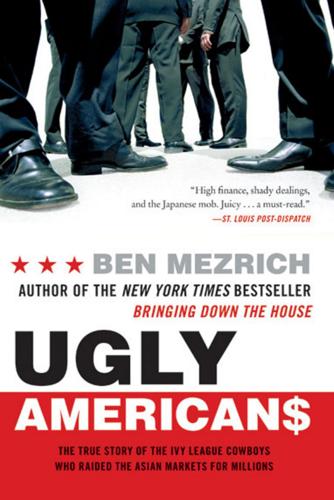
Ugly Americans: The True Story of the Ivy League Cowboys Who Raided the Asian Markets for Millions
by
Ben Mezrich
Published 3 May 2004
It wasn’t the facts that mattered, it was the psychology behind them. Because this new class of expats needed to understand that it was the psychology that led people like Joe Jett and Nick Leeson down the paths of disaster. The psychology of the high-stakes gambler. The psychology of the adrenaline junkie, the big-time player, who chased the wrong thrill and the wrong high off the wrong goddamn cliff. “By January of 1995,” Danville droned on, “Nick Leeson, Barings’s star trader in Singapore, had accrued more than 1.3 billion dollars in losses, hidden in an error account he’d named 88888—‘the Five Eights.’ To try and recoup these losses before anyone found out about them, Leeson bet them on the Nikkei.
…
0 222 889 -2371 0+ 41 85 29 4161 624 39 3⁄ 16 37 5⁄ 16 381 3⁄ 16 +1 1⁄ 4 11 1⁄ 8 11 1⁄ 8 52 51 3⁄ 16 51 5⁄ 8 - 1⁄ 16 6624 39 3⁄ 16 37 5⁄ 16 UGLY AMERICANS The True Story of the Ivy League Cowboys Who Raided the Asian Markets for Millions Ben Mezrich - 1⁄ 8 6624 39 3⁄ 16 37 5⁄ 16 381 3⁄ 16 +1 1⁄ 4 11 1 Author’s Note While this is a true story, many of the names are fictitious, including “John Malcolm.” I have used the real names of historical figures or those widely reported in the news, such as Joseph Jett, Nick Leeson, and Richard Li. Otherwise, no character in the book is meant to refer specifically to a real-life person. Also, regarding job titles and positions at companies that were actually in existence at the time the events in the book took place, they should not be read to refer to any specific people who were actually employed by those companies at any time.
…
An island of white faces in an ocean of Japanese, competing with one another to reap massive profits from the Asian markets. “Why are we doing better than the others?” he asked. There was a brief silence from the table, then the third Mike, a tennis player from Yale with a crooked smile and thick red hair, said, “It’s you guys, actually. It’s Carney. Nobody can match his profits. Not even Nick Leeson, Barings’s boy in Singapore. He’s supposed to be good, one of the best, but he’s no Dean Carney, and even he knows it.” There was an edge to the third Mike’s comments, and Malcolm wondered if it was more than simple jealousy. “So Carney’s quite a legend around here.” Akari nodded. “Carney is a legend all over Southeast Asia.
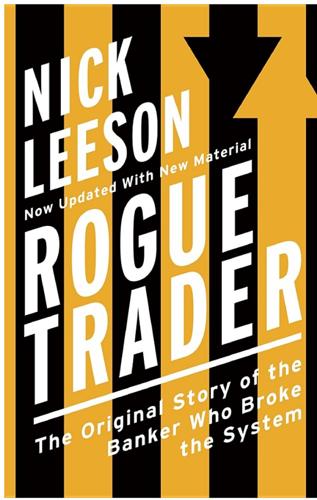
Rogue Trader
by
Nick Leeson
Published 21 Oct 2015
Published by Sphere 978-0-7515-6364-1 Copyright © 1996 Nick Leeson The moral right of the author has been asserted. New Introduction copyright © 2015 Nick Leeson 2: Press Association, 8: Kevin Phillips, 10: Kevin Phillips, 11: Kevin Phillips, 29: Associated Press/Topham, 30: Rex Features, 31: Paul Massey/FSP, 32: Mirror Syndication International, 33: Dillon Bryden/Sygma London, 36: Press Association, 37: Kevin Phillips All other photographs are from private collections All rights reserved. No part of this publication may be reproduced, stored in a retrieval system, or transmitted, in any form or by any means, without the prior permission in writing of the publisher.The publisher is not responsible for websites (or their content) that are not owned by the publisher.
…
‘There’s going to be a lot of money on Argentina,’ I nodded. ‘Really? Without Maradona?’ ‘So the locals say.’ ‘Sounds interesting.’ ‘OK,’ I said, detaching myself from the door frame of his office. ‘Better get back downstairs.’ ‘Fuck!’ I cursed as the lift doors closed behind me. ‘Ash Lewis!’ ‘Can Nick Leeson from Barings please report to reception, Nick Leeson from Barings to reception, please,’ the SIMEX tannoy announced. I straightened my jacket and tie and wiped my hands on my trousers. Ron Baker and Ash Lewis were waiting by the barrier. They made an incongruous couple – Ron was short, dark and bearded, with a bit of a belly pushing out in front of him.
…
The publisher’s blurb – “His Own Amazing Story” – is for once amply justified’ Irish Times ‘A graphic eye-opener’ Daily Mail ‘Reads as a real-life adventure story’ Times Literary Supplement ‘It’s got money, it’s got power, it’s got corruption… and if it wasn’t true you could be forgiven for thinking someone with a fertile imagination had dreamt the whole thing up… A cracking good read with a brilliant insight into the world of high-powered banking’ Irish News Nick Leeson now lives peacefully on the West Coast of Ireland with his wife Leona and their three children, Kersty, Alex and Mackensey. Nick is an accomplished and sought after Conference and after-dinner speaker and has lectured on a number of University and MBA Business courses. www.nickleeson.com live@nmp.co.uk Nick provides consultancy, training, advisory and investigation services through his latest venture, Risk Team.
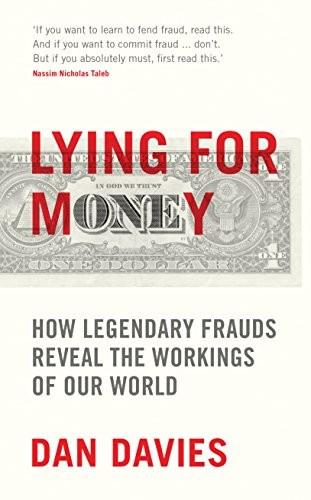
Lying for Money: How Fraud Makes the World Go Round
by
Daniel Davies
Published 14 Jul 2018
Something like the Brazilian straddle is the basic engine of a control fraud, much as trade credit is the engine of the long firm. The victim is usually someone who understands that risk is intrinsic to some part of his or her economic life, but hopes to manage it by delegation to a trusted outsider. Nick Leeson Nick Leeson was luckier than many convicted fraudsters in that he got Ewan McGregor to play him (and Anna Friel to play his wife) in the film of his story. In real life he had neither Hollywood dentistry nor a film-star physique; by the time he was captured, he had stress-eaten so many tubes of Fruit Pastilles that they had destroyed the enamel on his teeth.
…
People like this do exist (albeit rarely), and we will meet some of them later on. But they are not typical of white-collar crime. The interesting questions are never about individual psychology. There are plenty of larger-than-life characters. But there are also plenty of people like Enron’s Jeff Skilling and Baring’s Nick Leeson: aggressively dull clerks and managers whose only interest derives from the disasters they caused. And even for the real craftsmen the actual work is, of necessity, incredibly prosaic. Even a master fantasist like Sir Gregor spent a lot of his time calculating agricultural yield tables and dealing with land claim documentation.
…
There is nothing sadder in some ways than the managers of a fraudulent firm who then find they have a commercial success on their hands. They try desperately to repay their first plunderings, but the canker in the rose spreads inexorably and eats it all up. One way to close the gap, by the way, is to take big risks with the money which hasn’t been stolen yet. This is how ‘rogue’ traders like Nick Leeson tend to expand their concealed losses to levels that blow up banks. But it’s by no means unknown for even a small-time embezzler to take the float of company cash to a racetrack or casino in a last desperate gamble for redemption. But if compound growth is such a killer, how do frauds keep going for so long?
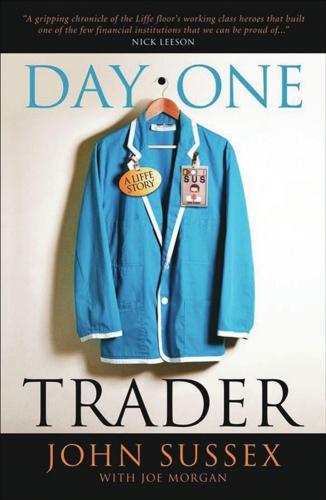
Day One Trader: A Liffe Story
by
John Sussex
Published 16 Aug 2009
I would also like to thank the following who have either contributed or agreed to let me write about them (there are no pseudonyms in this book): Clive Beauchamp, Darren Summerfield, Peter Lester, Nigel Bewick, David Roser, Keith Penny, Ted Ersser and David Helps who all worked with me at Sussex Futures and Alan Dickinson, Terry Crawley, Richard Crawley, David Wenman, Nigel Ackerman, Kevin Thomas, Tony Laporta, Danny Jordan, Mark Green and Roger Carlsson from the floor, also Nick Leeson, Matt Blom and Spencer Oliver. Finally Nick Carew Hunt, James Barr and especially John Foyle from Liffe and all the staff at John Wiley & Sons for their great support. Apologies to anyone I have forgotten. 1 The Chicago Inferno T he feeling captivated me. I opened the wooden swing doors and a barrage of noise erupted from an octagonal arena the size of a vast football pitch.
…
In essence, arbitrage involves buying a futures contract at a cheap price in one market while simultaneously selling at a higher price in another. The profit margins on this strategy are small so D AY O N E T R A D E R : A L I F F E S T O R Y | 55 arbitrageurs deal in large volumes to generate a good income. The most infamous arbitrager of them all was Nick Leeson. He was supposed to be using arbitrage to profit from differences in the prices of the Nikkei-225 futures contracts listed on the Osaka Securities Exchange in Japan and SIMEX in Singapore. Of course, his dealing strategies veered somewhat from being low risk. Spread traders would try to get an edge by trading two contract months at the same time – buying one and selling the other – before possibly buying back the short month to run a long position.
…
But as far as the public was concerned, these types of incidents were just part and parcel of the world of finance and nobody really understood or cared what went on. People across the world would only wake up to risks posed by derivatives when a lad from Watford single-handedly bankrupted one of the world’s most famous banks. The words ‘rogue trader’ are synonymous with one man – Nick Leeson. He is not the first or last man to lose hundreds of millions of dollars on the financial markets. Others have followed similarly destructive paths. The most recent example at the time of writing was that of Jerome Kerviel, a judo enthusiast who somehow managed to accumulate losses of # 4.9 billion right under the noses of the senior management of Société Générale in the investment bank’s Paris head office.
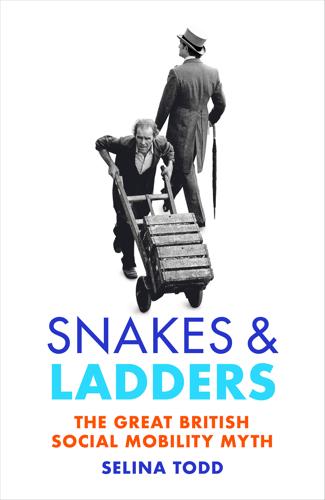
Snakes and Ladders: The Great British Social Mobility Myth
by
Selina Todd
Published 11 Feb 2021
These foreign banks were more open to recruiting men (and more rarely women) without public school or Oxbridge credentials.21 And they were expanding. Those upwardly mobile men who got a foothold in the City usually owed it to the creation of new jobs. Nick Leeson carved out a niche for himself in those branches of speculation that were ‘expanding rapidly, and few people really understood how they worked’. This offered some men the chance to scale the ladder.22 But rising through the financial hierarchy was far harder for those who began life on a lower rung. Nick Leeson observed that men from public schools or with contacts in the banks quickly became traders on the stock exchange floor, which was where ‘the real money was being made’.
…
Those in south-east England were best placed to take advantage of the deregulation and expansion of the stock market. Often they came from families with no connection to the public sector, and where older strategies for getting on in life had persisted despite the welfare state. Among them was Nick Leeson. In 1985 eighteen-year-old Nick, the son of a Watford plasterer, got a job as a clerk at Coutts bank. Nick’s mother, who worked in factory, cleaning and secretarial work, was a huge influence on him. He felt indebted to her hard work. ‘She had fought for us all our lives’, he recalled. ‘Even if I’d wanted a silly thing like a Pringle sweater because all my friends at school had one, she’d work some extra overtime and manage to buy it.’
…
Like James McBey back in the 1910s, he was aware that he had no support or patronage to rely on. ‘I had a clear sense of having to do it all myself’, he recalled.23 Women, meanwhile, continued to enter business and finance in very small numbers. The City was a macho world where cut-throat competition was strongly encouraged, bolstered by long drinking sessions after work. Nick Leeson, whose idea of a good night out was to ‘get out there and behave like an animal’, could fit in.24 Women could not. The few who did well tended to come from well-connected, wealthy families. Nicola Horlick was born in 1960 and educated at private school and Oxford, after which she worked for her family’s import firm.
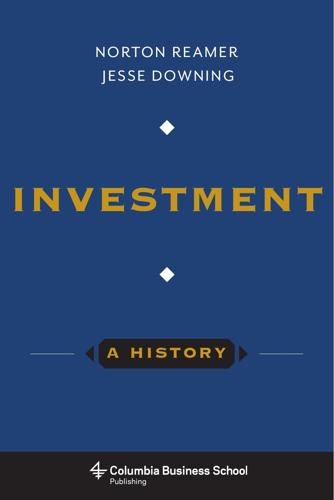
Investment: A History
by
Norton Reamer
and
Jesse Downing
Published 19 Feb 2016
They are still worth highlighting briefly, however, because there have been occasions when such frauds have crippled and even destroyed otherwise well-capitalized financial institutions. While there has been a litany of such episodes, two cases will be explored: Nick Leeson (Barings Bank) and Jérôme Kerviel (Société Générale). The Leeson case will be explored because of its role in the undoing of an old and venerable financial institution, and the Kerviel episode will be discussed because of its sheer size as one of the largest such trading frauds in history. nick leeson and barings bank Nick Leeson was born in 1967 in Watford, England, a working-class town about seventeen miles outside central London. After a short stint as a clerk for a private bank and then Morgan Stanley, he joined Barings Bank in 1989.
…
,” Forbes, June 12, 2012, http://www.forbes.com/sites/chrisbarth/2012/06/12/warren -buffett-clairvoyant-or-crazy. 86. Kohn, Encyclopedia of American Scandal, 162. 87. Stephen G. Dimmock and William C. Gerken, “Finding Bernie Madoff: Detecting Fraud by Investment Managers” (working paper, 2011). 88. Stephen J. Brown and Onno W. Steenbeek, “Doubling: Nick Leeson’s Trading Strategy,” Pacific-Basin Finance Journal 9, no. 2 (April 2001): 85–86. 89. Ibid., 86. 90. Nick Leeson, “Biography,” NickLeeson.com, accessed January 2015, http://www.nickleeson.com/biography/full_biography_02.html. 362 5. Fraud, Market Manipulation, and Insider Trading 91. Martin Arnold et al., “How Kerviel Exposed Lax Controls at Société Générale,” Financial Times, February 7, 2008, http://www.ft.com /intl/cms/s/0/927fe998-d5b2-11dc-8b56-0000779fd2ac.html. 92.
…
Journal of Finance 51, no. 1 (March 1996): 85–110. Brown, Richard. Society and Economy in Modern Britain, 1700–1850. New York: Routledge, 1990. Bibliography 385 Brown, Stephen J., William N. Goetzmann, and Stephen A. Ross. “Survival.” Journal of Finance 50, no. 3 (July 1995): 853–873. Brown, Stephen J., and Onno W. Steenbeek. “Doubling: Nick Leeson’s Trading Strategy.” Pacific-Basin Finance Journal 9, no. 2 (April 2001): 83–99. Buffett, Warren. “The Superinvestors of Graham-and-Doddsville.” Hermes (Columbia Business School), Fall 1984, 4–15. Bullock, Hugh. The Story of Investment Companies. New York: Columbia University Press, 1959. Burton, Katherine, and Saijel Kishan.

Traders, Guns & Money: Knowns and Unknowns in the Dazzling World of Derivatives
by
Satyajit Das
Published 15 Nov 2006
Fortuitously, I seemed to suit derivatives. Traders, Guns & Money is the record of my time in the derivatives industry. It is a collection of tales about the products, the people and the strange goings-on in the business. Ordinary men and women do not trouble themselves about this world. Just occasionally, an event such as Nick Leeson and Barings or LTCM spills over into the news. This infrequent appearance underestimates the importance of the industry and its role in finance. Every one of us is exposed to derivatives. We occasionally trade in derivatives when we invest. Our savings are frequently lodged with banks or fund managers that trade derivatives.
…
Some take out loans or make investments that have hidden derivative elements; most have handed over their money to banks and investment managers who trade derivatives; derivatives affect what returns they will receive; it affects what their pensions will be. But for most people, derivatives remain an unknown unknown. Once in a while the ripples from this strange sphere make it into the tabloids or into the nightly news. It is always a disaster, a large loss. For example, Nick Leeson on his way to prison after having bankrupted Barings. The name – LTCM – appeared briefly as its demise threatened the financial system. Derivatives in all their mind-boggling variety and combinations are traded each day. The inverse floaters that I traded all those years ago are still around. The risks of derivatives also remain – a known unknown.
…
If you expect the price to be stable, then you sell options, usually both calls and puts – a sold strangle or straddle. You bank the two premiums. If the price doesn’t move a lot then you are fine; if it moves sharply in any direction then you have a problem, it is not easy to straddle a barbed wire fence. Nick Leeson sold a huge straddle on the Japanese stock market just before it fell sharply after the Kobe earthquake – he was strangled. Nick did leave the country. It didn’t help. He was extradited back to Singapore and ended up in jail. If you expect prices to be very volatile, you buy a call and a put – a bought strangle or straddle.
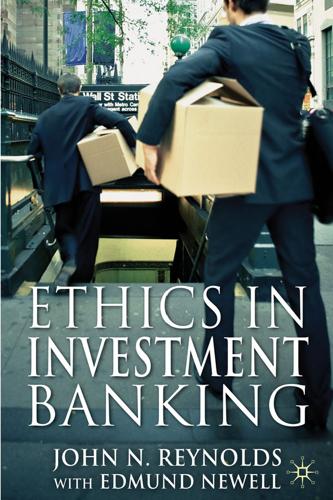
Ethics in Investment Banking
by
John N. Reynolds
and
Edmund Newell
Published 8 Nov 2011
These include the liquidation of the Bank of Credit and Commerce International (BCCI) amid allegations of fraud; the bankruptcies of Enron and WorldCom, which were associated with “creative accounting” – the deliberate manipulation of accounts to obscure the true financial position of these firms – and also with fraud; the activities of rogue trader Nick Leeson, which brought about the collapse of Barings Bank, the UK’s oldest merchant bank; Robert Maxwell’s alleged misappropriation of the Mirror Newspaper Group’s pension fund; the German FlowTex scandal, where non-existent machinery had been sold; and the Credit Lyonnais crisis in the early 1990s, following a disastrous expansion strategy and a failure of risk controls.
…
While the suggestion that traders engage in reckless gambling is a gross distortion of the skill of those working within a (speculative) market, it nevertheless highlights the importance of ethics within investment banking, and the importance of encouraging virtuous behaviour. 44 Ethics in Investment Banking In the 1990s, the activities of Nick Leeson highlighted the significance of personal character in investment banking. More recently, the case of Jérôme Kerviel provides a stark reminder of the dangers of reckless behaviour. Kerviel placed bets within the markets worth more than the entire capital of his firm, the French bank Société Générale, for which he received a five-year prison sentence and was fined ¤4.9 billion – the amount lost by Société Générale in January 2008 because of his rogue trading.
…
The issue of trading without a formal record of authorisation (the basis of Mr Kerviel’s defence, which was not accepted by the judge) can be one primarily of internal processes within an investment bank. If there is a deliberate attempt to subvert internal processes, then the actions would be unethical. There have been a number of high-profile cases involving rogue traders. One of these, Nick Leeson, in fact did bring about the demise of his employer, the relatively small (compared, for example, with the bulge bracket) but highly prestigious Barings Bank. Although the ethical position would be complex regarding whether a trader was committing a specifically unethical act by trading without a formal record of authorisation if they had nonetheless been informally authorised to trade, the same would not be the case for the managers who gave the “informal” authorisation.
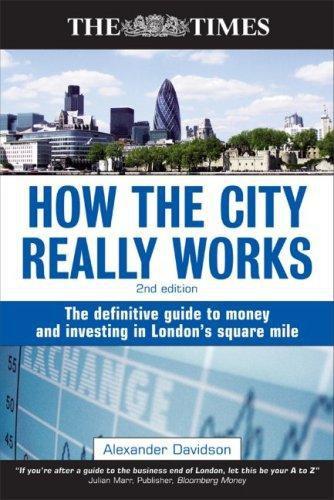
How the City Really Works: The Definitive Guide to Money and Investing in London's Square Mile
by
Alexander Davidson
Published 1 Apr 2008
The Bank of England has statutory immunity against negligence claims, but Deloitte, the liquidators of BCCI, brought an £850 million lawsuit against it claiming ‘misfeasance in public office’. In November 2005, the case collapsed and the Bank was thoroughly cleared of any allegations of dishonesty in relation to its supervisory role of BCCI. In 1995, Barings collapsed after its trader Nick Leeson had lost over £800 million through unauthorised trades in derivatives, and this triggered further consideration of the Bank of England’s supervisory role. Under the regulatory regime of the time (discussed in Chapter 22), Barings, as a major investment and trading bank, had to seek authorisation from the Bank of England for its banking activities, from the Securities and Futures Authority for its securities dealing services, and from the Investment Management Regulatory Organisation for its investment management.
…
If rates then go from 4 to 12 per cent, the company would have problems. Swaps have not always been used responsibly. In the 1980s, the London Borough of Hammersmith and Fulham lost money when it used interest rate swaps to bet on interest rates, and sold ‘swaptions’, which are options to enter a swap at a fixed rate. Pure fraud happens, as when trader Nick Leeson brought down Barings Bank using various deceits to cover for his derivatives gambling losses, but it is infinitesimal compared with the amount of trading. For more on the Barings collapse, see Chapter 2. 9 Derivatives for retail investors Introduction Retail investors use derivatives for speculating and hedging in the same way as professionals, but have less access to over-the-counter products.
…
The press will highlight any perceived infringement or corporate failure and this will instil an ‘apparent desire to place the blame on an individual or individuals’, disguising the broader culpability of the organisation, according to risk management research by Dr Lynne Drennan at Glasgow Caledonian University. Drennan has observed the process in the press treatment of Jeff Skilling as chief executive of Enron when the US energy company was hit by scandals in 2001, of Robert Maxwell, chairman and chief executive of Mirror Group Newspapers when his pension theft hit the press, and of Nick Leeson, the trader on the Singapore Monetary Exchange for Barings Bank. A good story is everything. Martin Fridson, a managing director at Merrill Lynch, said in his book Investment Illusions that reporters had a tendency to approach not necessarily the best authorities but those who could provide colourful quotes. _________________________________ FINANCIAL COMMUNICATIONS 187 But if the press is not perfect, it is for private investors the least slanted source of City information, former deputy City editor of the Daily Mail Michael Walters has said.

Start With Why: How Great Leaders Inspire Everyone to Take Action
by
Simon Sinek
Published 29 Oct 2009
Southwest’s remarkable ability to solve problems, Apple’s remarkable knack for innovation and the Wright brothers’ ability to develop a technology with the team they had were all possible for the same reason: they believed they could and they trusted their people to do it. The Definition of Trust Founded by Sir Francis Baring in 1762, Barings Bank was the oldest merchant bank in England. The bank, which survived the Napoleonic Wars, World War I and World War II, was unable to survive the predilection for risk of one self-proclaimed rogue trader. Nick Leeson single-handedly brought down Barings Bank in 1995 by performing some unauthorized, extremely high-risk trades. Had the proverbial winds continued to blow in the right direction, Leeson would have made himself and the bank extremely rich and he would have been hailed as a hero. But such is the nature of unpredictable things like the weather and financial markets.
…
In such a case, the effort may be good for the individual and it may be good for the group, but the benefits, especially for the group, come with a time limit. Over time, this system will break down, often to the detriment of the organization. Developing trust to encourage people other than those with a predilection for risk, like Nick Leeson, is a better long-term strategy. Great organizations become great because the people inside the organization feel protected. The strong sense of culture creates a sense of belonging and acts like a net. People come to work knowing that their bosses, colleagues and the organization as a whole will look out for them.
…
New York: Free Press, 2004. 97 Langley saw the airplane as his ticket to fame and fortune: Tobin, personal interview, February 2009. 97 “Wilbur and Orville were true scientists”: Tobin, personal interview, February 2009. 98 He found the defeat humiliating: Tobin, To Conquer the Air. 101 Southwest Airlines is famous for pioneering the ten-minute turnaround: Paul Burnham Finney, “Loading an Airliner is Rocket Science,” New York Times, November 14, 2006, http://travel2.nytimes.com/2006/11/14/business/14boarding.html?pagewanted=print. 103 “People at the London end of Barings”: Nick Leeson and Edward Whitley. Rogue Trader: How I Brought Down Barings Bank and Shook the Financial World. New York: Little, Brown and Company, 1996. 105 Southwest will not tolerate customers who abuse their staff: Freiberg and Freiberg, Nuts! 106 A one-star general, John Jumper was an experienced F-15 pilot: General Lori Robinson, personal interview, October 2008. 108 he served as chief of staff of the U.S.

Beautiful security
by
Andy Oram
and
John Viega
Published 15 Dec 2009
In this section, we analyze two situations where catastrophic security incidents occurred and discuss how an effective security metrics program might have alleviated or even eliminated suffering and loss. Barings Bank: Insider Breach Let us first look at a breach with the most dire of consequences: bankruptcy. The breach was actually a succession of breaches perpetrated by one individual, Nick Leeson, over a period of four years that resulted in the collapse of Barings Bank and its ultimate sale to the ING Group for one pound sterling in 1995. The players Barings Bank was Britain’s oldest merchant bank, founded in 1762. It had a long and distinguished history, helping to finance the Louisiana Purchase, the Napoleonic Wars, the Canadian Pacific Railway, and the Erie Canal.
…
The British government used Barings to liquidate 38 CHAPTER THREE assets in the United States and elsewhere to finance the war effort during World War II. Princess Diana was the great-granddaughter of one of the Barings family. Barings was Queen Elizabeth’s personal bank. Born in 1967 as a working class son of a plasterer, Nick Leeson’s life is a tale of rags to riches to rags, and possibly back to somewhat lesser riches. He failed his final math exam and left school with few qualifications. Despite this, he managed to land a job as a bank clerk, which led to a succession of additional jobs with other banks, ending up with Barings in the early 1990s.
…
The seller of a call option is making a commitment to sell a certain number of shares of stock for a strike price at a time in the future. As with put options, the parameters N, S, and T all apply and are the same for one contract between the buyer and seller of a call. The price of the option (Qcall ) is what the buyer pays to the seller. A short straddle is a trading strategy in which a trader—say, Nick Leeson—sells matching put and call options. Note that a long straddle is a strategy in which the trader buys matching put and call options. For both of these trading strategies, one can build a model that projects trading profits (Y ) as a function of N, S, T, and the current stock price per share (X ).
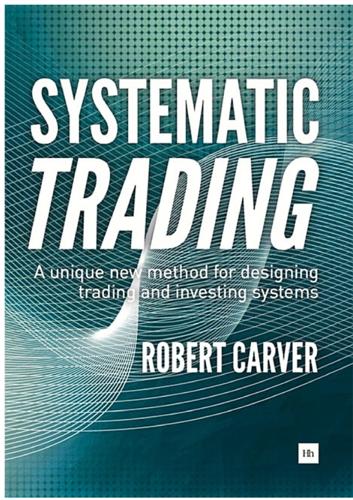
Systematic Trading: A Unique New Method for Designing Trading and Investing Systems
by
Robert Carver
Published 13 Sep 2015
• Tail protect hedge funds that try and provide cheap insurance against large market moves, as practised by Nassim Taleb amongst others. • Short option strategies, e.g. selling equity option ‘straddles’ (pairs of call and put options). Such as Nick Leeson of Barings who lost around $1 billion selling straddles in January 1995.*** * See The Greatest Trade Ever by Gregory Zuckerman. ** See When Genius Failed by Roger Lowenstein. *** See Rogue Trader by none other than Nick Leeson. Trading speed: Fast vs Slow Very slow (average holding period: several months to many years) Very slow systems look almost like static portfolios, with additional gradual changes in position coming from their trading rules.
…
Read after Mallaby, if you can cope with the sometimes technical treatment. 275 Systematic Trading When Genius Failed: The Rise and Fall of Long-Term Capital Management, Roger Lowenstein, 2001, Random House A negative skew disaster and a real-life example of the disadvantage of leveraging up too much on low volatility positions. Probably the most useful market history in this list and should be compulsory reading for anyone contemplating negative skew trading. Rogue Trader, Nick Leeson, 1999, Sphere Very famous example of when negative skew goes wrong; amongst other things Nick lost much of his money selling option straddles. Optional reading. The Greatest Trade Ever, Gregory Zuckerman, 2010, Penguin A great story about a positive skew trade that worked: John Paulson’s bearish bet on mortgage backed securities.
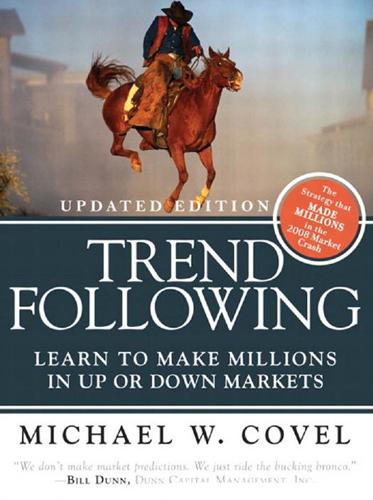
Trend Following: How Great Traders Make Millions in Up or Down Markets
by
Michael W. Covel
Published 19 Mar 2007
Reflecting on the unknown is not pleasant, as author Alexander Ineichen notes: “Fear is still in the bones of some pension fund trustees— after Mr. Leeson brought down Barings Bank. The failure of Barings Bank is probably the most often cited derivatives disaster. While the futures market had been the instrument used by Nick Leeson to play the zero-sum game [and] someone made a lot of money being short the Nikkei futures Mr. Leeson was buying.”4 It often seems that trends create events more than events create trends. The event itself is usually a reflection of everyone “getting it” as Ed [Seykota] calls it, “an aha.”’ By this time, the trend followers usually have well-established positions.
…
The performance histories of trend followers during the 2008 market crash, 2000–2002 stock market bubble, the 1998 LongTerm Capital Management (LTCM) crisis, the Asian contagion, the Barings Bank bust in 1995, and the German firm Metallgesellschaft’s collapse in 1993, answer that all important question: “Who won?” “Have you heard any rumors?” Killian, perplexed, said no. “I think we’re bust.” “Is this a crank call?” Killian asked. “There’s a really ugly story coming out that perhaps Nick Leeson has taken the company down.”9 126 Trend Following (Updated Edition): Learn to Make Millions in Up or Down Markets Event #1: 2008 Stock Market Bubble and Crash One reason for this paucity of early information is suggested by the following part of the term trend following. The implication is one of passivity, of reaction, rather than of bold, assertive action—and human nature shows a distinct preference for the latter.
…
The market events of that time period, by themselves, could be the subject of a Chapter 4 • Big Events, Crashes, and Panics graduate course in finance at Harvard Business School. Only a few years later, despite the significance of what happened, the events have been forgotten. A rogue trader, Nick Leeson, overextended Barings Bank in the Nikkei 225, the Japanese equivalent to the American Dow, by speculating that the Nikkei 225 would move higher. It tanked, and Barings, the Queen’s bank, one of the oldest, most well established banks in England, collapsed, losing $2.2 billion. Who won the Barings Bank sweepstakes?
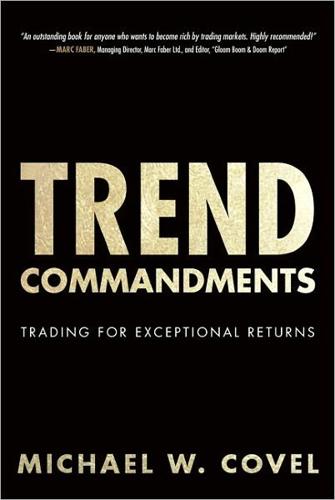
Trend Commandments: Trading for Exceptional Returns
by
Michael W. Covel
Published 14 Jun 2011
He is not broke. How did he make that fortune? Trading in a very rigid, rules-defined, way. In 1995, Henry, a former farmer from Arkansas who began his trading career humbly hedging his crops, made speculative trading history. His trading strategies essentially won the money lost by rogue trader Nick Leeson of Barings Bank (often referred to as the “Queen’s bank”). Leeson bet wildly and lost $1.3 billion. The Queen’s bank collapsed. Leeson was the Time cover boy. Media ate up the bank’s implosion and coverage was nonstop. Leeson was the known loser. Henry was the then-unknown winner. Henry won practicing a form of trading called systematic trend following.
…
The academics locked away with job security tenure always come up short in their analysis: “It’s a zero-sum game. For every loser there’s a winner, but you can’t always be specific about who the winner is.”2 Not true. Bear markets cause events more than events cause bear markets. John W. Henry made a fortune going short the Nikkei, while Nick Leeson and Barings Bank were long. That’s a major winner right there.3 My political science background allowed me to see that; others should be able to see it too. However, many look at events through the wrong lens. Deep down the money elite know that standard finance theory has no explanation for the winners of low-probability, high-impact events.4 The bottom line is that big, unexpected events make trend traders rich.
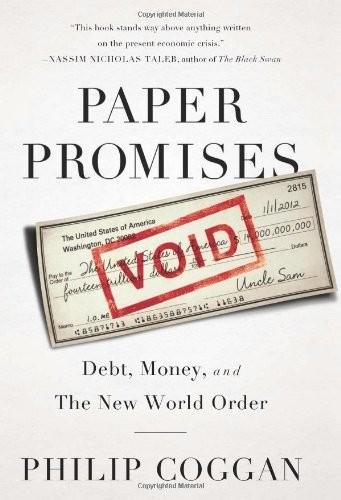
Paper Promises
by
Philip Coggan
Published 1 Dec 2011
The collapses of Johnson Matthey in 1984 and BCCI in 1991 showed that banks could go bust the old-fashioned way: by lending money to people who could not pay it back. The failure of Barings in 1995 was a more modern story, linked to the derivatives market. It revealed an astonishing naivety and lack of controls on the part of the Barings management. Nick Leeson was a relatively junior banker operating out of Barings’ Singapore office. His early career did not suggest he was destined to become a star. What he was supposed to be doing was indulging in arbitrage between the Singapore and Japanese markets, buying low on one exchange and selling high on the other.
…
‘It was not actually terribly difficult to make money in the securities markets,’ said Peter Baring, the firm’s chairman, just two years before the company’s collapse.22 The Barings failure revealed the dark secrets at the heart of the financial boom. First, high returns are nearly always accompanied by high risk. Secondly, traders have every incentive to take risks with ‘other people’s money’ to inflate their own bonuses, and few incentives to admit their mistakes. However, the bank’s failure was dismissed as a one-off. The title of Nick Leeson’s autobiography, Rogue Trader, tells the tale. He was operating outside the system, not within it. It was assumed by regulators that private businesses would have every incentive to control their risks, particularly as other banks would be trading with them every day, and thus be watching for signs of weakness.
…
New Yorker, 29 November 2010. 19 Bob Woodward, Maestro: Greenspan’s Fed and the American Boom, New York, 2001. 20 Admittedly, that would be very difficult in the case of the European Central Bank. Its mandate was set by treaty. 21 Michiyo Nakamoto and David Wighton, ‘Citigroup Chief Stays Bullish on Buy-outs’, Financial Times, 9 July 2007. 22 Quoted in Nick Leeson, Rogue Trader, London, 1996. 23 Pablo Triana, Lecturing Birds on Flying: Can Mathematical Theories Destroy The Financial Markets?, New York, 2009. 24 Nassim Nicholas Taleb, The Black Swan: The Impact of the Highly Improbable, London, 2008. 25 Peter Thal Larsen, ‘Goldman Pays the Price for Being Big’, Financial Times, 13 August 2008. 26 Andrew Haldane, ‘Why Banks Failed the Stress Test’, 9 – 10 February 2009. 27 Interview with the author, 25 October 2010. 9.

Adapt: Why Success Always Starts With Failure
by
Tim Harford
Published 1 Jun 2011
Barings was London’s oldest merchant bank when, in 1995, it collapsed after more than 300 years’ trading. One of its employees, Nick Leeson, had lost vast sums making unauthorised bets with the bank’s capital. He destroyed the bank single-handedly, assisted only by the gaps in Barings Bank’s supervision of him. ‘I used to speak to bankers about risk and accidents and they thought I was talking about people banging their shins,’ James Reason told me. ‘Then they discovered what a risk is. It came with the name of Nick Leeson.’ Another catastrophe expert who has no doubt about the parallel is Charles Perrow, emeritus professor of sociology at Yale.
…
His approach is in sharp contrast to the prevailing regulatory philosophy, which unwittingly encouraged banks to become larger and more complicated, and actively encouraged off-balance-sheet financial juggling. I do not know for sure whether Kay has the right answer, but normal accident theory suggests he is certainly asking the right question. 8 Slips, mistakes and violations James Reason, the scholar of catastrophe who uses Nick Leeson and Barings Bank as a case study to help engineers prevent accidents, is careful to distinguish between three different types of error. The most straightforward are slips, when through clumsiness or lack of attention you do something you simply didn’t mean to do. In 2005, a young Japanese trader tried to sell one share at a price of ¥600,000 and instead sold 600,000 shares at the bargain price of ¥1.

Manias, Panics and Crashes: A History of Financial Crises, Sixth Edition
by
Kindleberger, Charles P.
and
Robert Z., Aliber
Published 9 Aug 2011
This same issue of intervention reappeared with the question of whether the US government should have rescued Chrysler in 1979, New York City in 1975 and the Continental Illinois Bank in 1984. (In fact Continental Illinois failed, although the depositors in the bank were made whole.). Similarly, should the Bank of England have rescued Baring Brothers in 1995 after the rogue trader Nick Leeson in its Singapore branch office had depleted the firm’s capital through hidden transactions in option contracts? The question appears whenever a group of borrowers or banks or other financial institutions incurs such massive losses that they are likely to be forced to close, at least under their current owners.
…
Crash and panic, with their motto of sauve qui peut, induce many to cheat in the effort to forestall bankruptcy or some other financial disaster. A little cheating today may avert a catastrophe tomorrow. When the boom ends and the losses become apparent, some individuals will make a big bet in the hope that a successful outcome will provide an escape from what otherwise would be a disaster. Nick Leeson was a modest functionary – one of five or six employees – in the Singapore office of Baring Brothers, the venerable London merchant bank. Leeson traded options on stocks and especially options on the Nikkei, the primary stock price index in Tokyo. The London office of Barings had set a limit on Leeson’s position, the maximum amount of the firm’s capital that he could risk.
…
These partnerships had names taken from Star Wars – JEDI, Chewco, and so on. The partnerships would borrow from the banks and other lenders as if they were independent from Enron and then invest the funds with Enron. Enron used some of the cash obtained from the SFV’s borrowings to support the price of its own stock. That is more or less a Nick Leeson go-for-broke strategy; if the stock price should fall, then the value of the partnerships would decline and they would be ‘under water’. But that is the traditional practice and it had been used by American railroads in the nineteenth century. The collapse of Enron led to the demise of Arthur Andersen, formerly the most respected of the large US accounting firms – although in the previous few years Andersen had been sued by the creditors of the Baptist Hospital of Arizona, Waste Management and several other audit clients that had gone belly-up.

Unknown Market Wizards: The Best Traders You've Never Heard Of
by
Jack D. Schwager
Published 2 Nov 2020
I bought a Porsche, and I was planning how I would live like a billionaire. Then the bull market ended. Within six months, I blew out the entire account. All I had left was the Porsche. I switched jobs, going to another brokerage firm. Eventually, I started trading my account again. I made a lot of money when Nick Leeson blew out. [Nick Leeson was a trader for Barings Bank who was able to successfully hide a string of mounting losses. By the time his deception was uncovered, he had lost $1.4 billion, causing the collapse of Barings Bank.] How did you make money off of that event? Leeson had a massive short option position in the Nikkei stock index futures when he was found out.
…
They even had an outdoor swimming pool, which is ridiculous in the north of England because it barely gets above 20° Celsius [68° Fahrenheit] in the summer. I remember walking away with my mom and telling her, “I’m going to buy that house one day.” That experience set my ambition. I had no idea how; I just knew that I wanted to be rich. The other thing that got me interested in trading was the movie about Nick Leeson [Rogue Trader], who broke Barings Bank. The part about him being a shady character, of course, is not good. But I remember watching him on the trading floor with all the shouting and screaming, thinking, “That looks so cool.” How old were you then? I was in my young teens. I think you are the first trader I ever met who was inspired to become a trader by that movie.
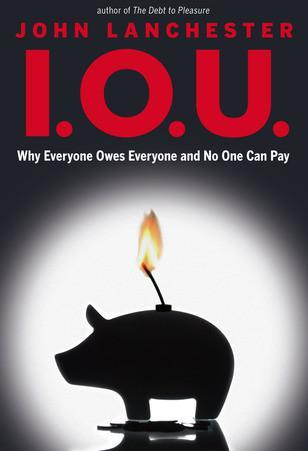
I.O.U.: Why Everyone Owes Everyone and No One Can Pay
by
John Lanchester
Published 14 Dec 2009
It might seem unlikely that anyone would do anything that stupid, but in practice it happens all the time. The list of individual traders who have lost more than a billion dollars at a time betting on derivatives is not short: Robert Citron of Orange County, California; Toshihide Iguchi at Daiwa Bank; Yasuo Hamanaka at Sumitomo Corporation; Nick Leeson of Barings Bank; and now, most recently and spectacularly of all, Jérôme Kerviel of Société Générale. These are the traders who have each single-handedly managed to lose more than a billion dollars of their employers’ money. Hamanaka used to be the poster boy—he lost $2.6 billion betting on copper in 1996.
…
He added, “We now own his bank.” Derivatives are a central part of this new mathematical complexity. One of their main uses is in arbitrage. That’s the name of investments which effectively bet both ways on the market, exploiting small differences in price to make what should be risk-free profits. (It’s what Nick Leeson was supposed to be doing, exploiting tiny differences in the price of Nikkei 225 futures between the Osaka exchange, where trading was electronic, and the Singapore exchange, where it wasn’t. The gap in price would last only for a couple of seconds, and in that gap Barings would buy low and sell high—a guaranteed, risk-free profit.)
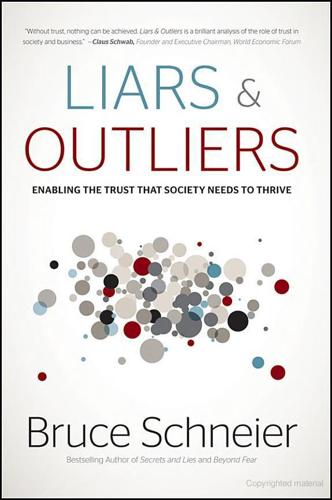
Liars and Outliers: How Security Holds Society Together
by
Bruce Schneier
Published 14 Feb 2012
Means (1931), “The Growth in the Relative Importance of the Large Corporation in American Economic Life,” The American Economic Review, 21:10–42. Ronald Coase first Ronald Coase (1937), “The Nature of the Firm,” Economica, 4:386–405. Nick Leeson's Richard W. Stevenson (28 Feb 1995), “The Collapse of Barings: The Overview: Young Trader's $29 Billion Bet Brings down a Venerable Firm,” New York Times. Erik Ipsen (19 Jul 1995), “Bank of England Cites Fraud in Barings Collapse,” New York Times. Peter Culshaw (8 Jan 2009), “Nick Leeson: How the Original Rogue Trader at Barings Bank Is Thriving in the Credit Crunch,” The Telegraph. Kweku Adoboli Victoria Howley and Emma Thomasson (16 Sep 2011), “UBS $2 Billion Rogue Trade Suspect Held in London,” Reuters.
…
This means that as large corporations grow, fewer defectors can do even more damage. So society needs more security, to further reduce the amount of defection, in order to keep the potential damage constant. Individuals within a large corporation can defect from the corporation to a greater degree, for greater personal gain and to the greater detriment of the corporation. Nick Leeson's unauthorized trading while he worked for Barings Bank destroyed the entire company in 1995. Kenneth Lay, Jeffrey Skilling, and other senior Enron executives destroyed that company. Kweku Adoboli lost $2.3 billion for the investment bank UBS in 2011. Large corporations have more power to deliberately manipulate societal pressures.
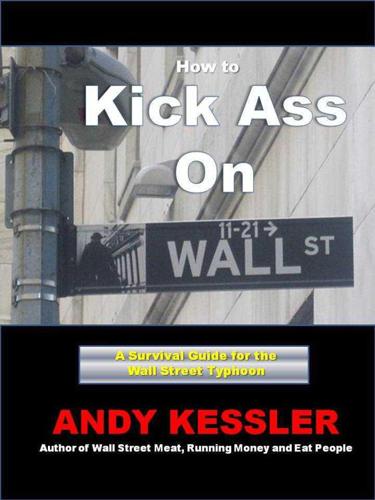
How to Kick Ass on Wall Street
by
Andy Kessler
Published 4 Jun 2012
There is a firm-wide limit, known as VaR or Value at Risk – the most a firm could lose on any given day. The better you get trading, the higher your personal limit and the bigger chunk of the firm’s capital you get to play with and turn into more money (or end up as a smoking hole in the ground, see Nick Leeson and JP Morgan’s London Whale.) Bond trading is a little different, but not much. Again, trading government bonds and munis and corporate debt is mostly facilitating trades for clients. But there is no exchange. These are negotiated transactions. It’s you against the client, even though you are providing a service for the client.

The Greed Merchants: How the Investment Banks Exploited the System
by
Philip Augar
Published 20 Apr 2005
The industry has always attracted free spirited, independent minded individuals who think they know best. Managers have to know when to stand up to their stars and when to let them have their own way, when to back off and allow entrepreneurship its head, and when to turn every stone. When do you leave a Joseph Jett or a Nick Leeson to do their own thing because their results are great, and when do you dig up the drains because you smell a rat? Risk taking is an essential part of the business and managers have to create an environment where people take necessary risks without being reckless. It is an instinctive thing. A reason that firms such as GE, generally acclaimed as well managed in the other financial and industrial fields where they operate, had difficulties with investment banking is that it appears not to follow normal business rules.
…
Risk awareness had increased after the equity market crisis of 1987 but before 1994 it was not yet engraved in the culture and risk management was still seen as a low status, bureaucratic and not very well paid occupation. After 1994, and particularly after the unsupervised activities of ‘rogue trader’ Nick Leeson brought down Barings, the venerable British investment bank, in 1995, it was taken more seriously. Risk departments increased in size, were staffed by better qualified and better paid people and became more influential. The IT revolution of the nineties helped this new commitment. The internet permitted the real-time data downloads that were needed to feed the risk models.
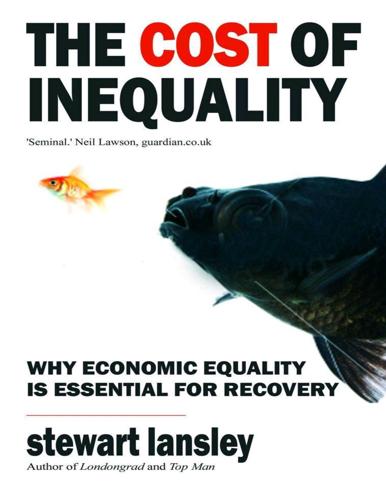
The Cost of Inequality: Why Economic Equality Is Essential for Recovery
by
Stewart Lansley
Published 19 Jan 2012
From the middle to the end of the 1990s, a number of banks—from Salomon Brothers and Goldman Sachs to Merrill Lynch and Drexel Burnham, Lambert—started to operate their own proprietary trading arms using the firm’s own rather than their customers’ money and investing mostly at the high risk end of the market. In this way profits were siphoned off to finance takeovers, invest in hedge funds or bet on commodities and currency movements. Such activity undoubtedly added considerable risk to the system as a whole. Nick Leeson, for example, was a key member of Barings proprietary trading team and at least some of the money he was investing came from the proprietary trading budget. As the investment banks were very lightly regulated, the authorities mostly had little idea about the scale or character of such activity.
…
Other extreme examples include the myriad business scandals—from Robert Maxwell’s raid on the Mirror staff’s pension fund to jailed financier Peter Clowes fraudulent savings scheme—with tycoons lining their own pockets by fleecing staff and customers. When Barings was brought to its knees by the rogue derivatives trader, Nick Leeson, in 1994, the funds to finance his dealing had been provided by small savers who had subscribed to a bond issue issued by the bank. The bondholders lost everything. While there is nothing new about rogue businessmen, the deregulation of finance became something of a charter for abuse. The last twenty years of ‘self-regulation’ have been riddled with examples of the high level misselling of financial products, ones that have caught a majority of the population at some stage.
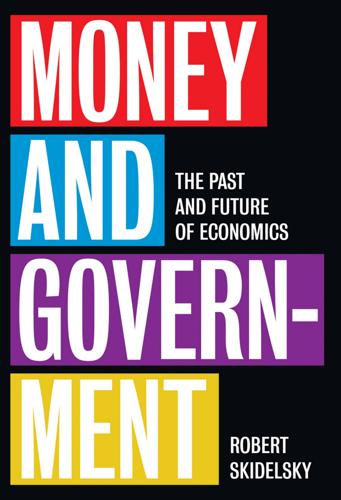
Money and Government: The Past and Future of Economics
by
Robert Skidelsky
Published 13 Nov 2018
The ‘self-serving’ culture of banks needed 365 A N e w M ac roe c onom ic s to be challenged, as without this, banks would circumvent the regulations.20 ResPublica proposed a banker’s oath, modelled on the Hippocratic oath sworn by doctors, which would enjoin a duty of care on bankers towards their customers. There are proposals to detach financial compensation from shortterm stock-price performance, to fine bankers for unethical practices, and to cap or claw back bonuses. Nick Leeson, the original ‘rogue trader’ whose exploits brought down Barings Bank in 1995, has cut through the thinness of these precautions: ‘If we are going to try and change a banker’s bonus structure, I think within 15 minutes they will have a new structure that works in the same way. They have the best accountants and lawyers.’21 The root of the problem is the greed for money.
…
The Liikanen Report proposed a similar system of ring-fencing for banks in the European Union, but has yet to be legislated. 14 ‘Riskier’ assets – loans held by the bank where the borrowers had higher chances of defaulting – were given a larger weighting than ‘safer’ assets, such as cash or government bonds. 15 Congdon and Hanke (2017). 16 Riecher and Black (2013); see also Wallace (2013). 17 Prynn (2016). 18 Foreword to ‘The Bank of England’s approach to resolution’, Bank of England (2017d). 19 Hoenig (2014). 20 Restoring ‘virtue’ in banking is defined as the ‘re-introduction of purpose into banking as both an economic need and a moral necessity’ and to promote the ethos required to inculcate that purpose ‘into all of the industries’ operations and behaviour’. 21 Nick Leeson, quoted in Baxter (2014). 22 Lord Turner, quoted in Private Debt Project (2015). 424 No t e s 23 For an individual bank, lending against real estate seems more secure, but system-wide ‘lending against real estate – and in particular against existing real estate whose supply cannot be easily increased – generates selfreinforcing cycles of credit supply, credit demand, and asset prices’ (ibid.). 24 Woods (2017). 25 Keynes (1980b), p. 384. 26 Source: World Bank (2017d). 27 The stationary state was later developed into the idea of balanced growth, with population and wealth increasing at the same rate, and unchanged tastes. 28 Summers (2013, 2014); Krugman (2013a, 2013b). 29 Keynes (1978), p. 328.
…
Bank of England Monetary Policy Committee (1999), The Transmission Mechanism of Monetary Policy. Available at: http://www.bankofengland. co.uk/publications/Documents/other/monetary/montrans.pdf [Accessed 10 July 2017]. 428 Bi bl io g r a p h y Barro, R. J. (1974), Are government bonds net wealth? Journal of Political Economy, 82 (6), pp. 1095–117. Baxter, D. (2014), The big interview: Nick Leeson, the original rogue trader. Business Reporter. 3 August. Available at: https://staging.businessreporter.co.uk/2014/08/03/the-big-interview-nick-leeseon-the-original-roguetrader-on-regrets-and-revival/ [Accessed 6 December 2017]. BBC (2010), Irish deficit balloons after new bank bail-out. Available at: http://www.bbc.co.uk/news/business-11441473 [Accessed 4 July 2017].
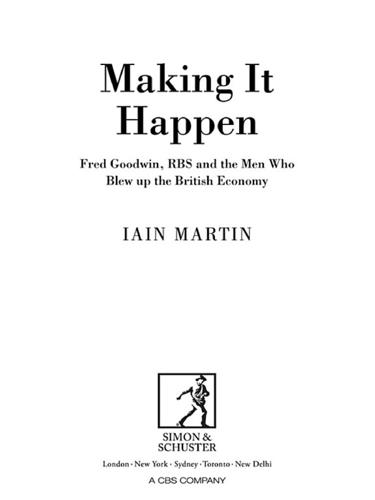
Making It Happen: Fred Goodwin, RBS and the Men Who Blew Up the British Economy
by
Iain Martin
Published 11 Sep 2013
If New Labour won power there would have to be changes in the way the City of London and financial services were regulated, in order to make them fit for Brown’s new era. City scandals certainly suggested change was necessary. In 1991 BCCI, the Bank of Credit and Commerce International, the London-based international bank, imploded. Then the historic merchant bank Barings (founded 1762) was brought down in 1995 by the ‘rogue trader’ Nick Leeson. The answer, Brown concluded, was a dose of New Labour modernisation, and a shift to new systems and regulators not dependent on what he saw as the dominance of the old school tie and suspect connections. On Tuesday 6 May 1997, the new Chancellor made his first move. Less than a week before, Blair and Brown had not merely defeated a tired Tory Party contaminated by allegations of sleaze.
…
He had left the auditor Arthur Andersen in 2001, only months before it collapsed in 2002 over its involvement in the Enron scandal, and he later departed the FSA in July 2007, hailed at the time for the good job he had done regulating financial services. Arriving at the FSA’s offices in the North Colonnade of Canary Wharf, Tiner was no greenhorn when it came to banks. He had led the team at Arthur Andersen hired by the Bank of England to investigate the collapse of Barings Bank when it was brought down by the activities of the trader Nick Leeson in 1995. Tiner knew about bank runs and how quickly a piece of exotic trading could go wrong. The FSA boss, supported by the organisation’s new chairman Callum McCarthy, subscribed to a then fashionable theory. If the banks had become so intricate, with vast risk-management teams and access to the cleverest thinking and computing, then no state regulator or state employee could hope to outsmart them.
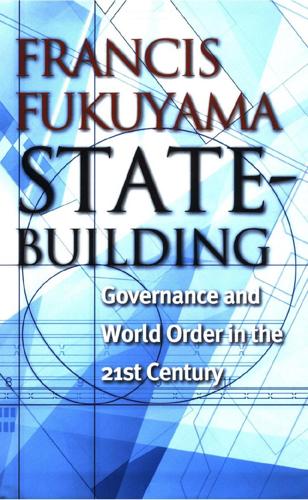
State-Building: Governance and World Order in the 21st Century
by
Francis Fukuyama
Published 7 Apr 2004
This decentralization continued until some local Sears auto service outlets in California engaged in a bait-and-switch operation that undermined the integrity of the Sears brand name (Miller 1992). In another example, the venerable British investment firm Barings delegated authority to, in effect, bet the company to a single young currency trader in Singapore, Nick Leeson. He then proceeded to make extremely large currency trades that undermined the capital structure of the company, forcing Barings into bankruptcy. Federalism poses a similar problem. Delegation of authority to state and local government means almost inevitably there will be greater variance in government performance.
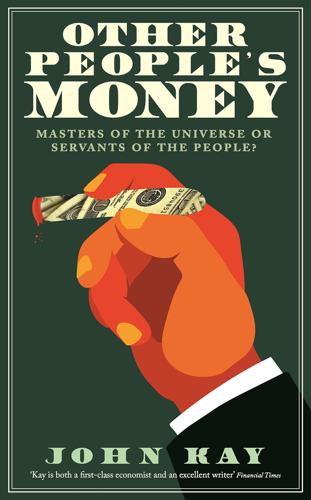
Other People's Money: Masters of the Universe or Servants of the People?
by
John Kay
Published 2 Sep 2015
The paradox of this game, which has intrigued statisticians and attracted gamblers for centuries, lies in its two seemingly incompatible properties. The game is certain to be profitable if you play for sufficiently long, but if you play it regularly you will eventually be ruined. From time to time ‘rogue traders’ grab the headlines. The term came into popular language after Nick Leeson, a 28-year-old employee in the Singapore office of the venerable London investment bank of Barings, vanished overnight from his desk. The losses he had incurred led to the bankruptcy of the bank, and jail for Leeson. More recent ‘rogue traders’ include Jérôme Kerviel, that former employee of the French bank Société Générale (now in jail), who was ordered to repay €4.9 billion, and J.P.
…
., 1926, ‘Truth and Probability’, in Ramsey, F.P., 1931, The Foundations of Mathematics and Other Logical Essays, ed. Braithwaite, R.B., London, Kegan, Paul, Trench, Trubner & Co. Rappaport, A., 1986, Creating Shareholder Value: The New Standard for Business Performance, New York, Free Press. Rawnsley, J.H., 1995, Going for Broke: Nick Leeson and the Collapse of Barings Bank, London, HarperCollins. Reader, W.J., 1970–75, Imperial Chemical Industries: A History, London, Oxford University Press. Reich, R.B., 1990, ‘Who Is Us?’, Harvard Business Review, January. Reinhart, C.M., and Rogoff, K.S., 2010, ‘Growth in a Time of Debt’, American Economic Review: Papers & Proceedings, 100 (2), May, pp. 573–8.
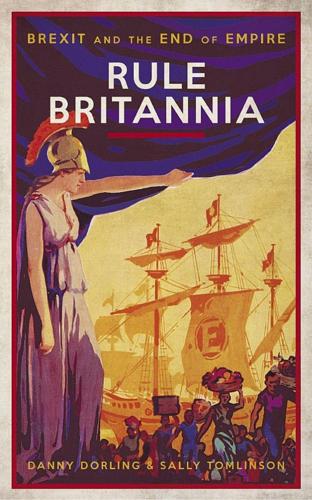
Rule Britannia: Brexit and the End of Empire
by
Danny Dorling
and
Sally Tomlinson
Published 15 Jan 2019
One wrong move and your profits can be wiped out, your reputation destroyed, and your job gone.30 With no sense of what might be just around the corner, the BBC ended its report on City traders in January 2008 with the following warning: ‘But the system can break down, as in the case of Barings in 1995. There, Nick Leeson was able to hide huge losses, as he was the trader and manager and looked after the back office.’ And then, within a few months of the BBC making that statement, the entire banking system of London was in freefall. No longer was one ‘rogue trader’ the bad apple: it turned out that the whole barrel had gone sour. When British banker turned rogue trader Nick Leeson was jailed for his exploits in 1995, he was unlucky to have been caught out when the trades went sour. In 2008, thousands of trades went sour and no one was jailed, despite such similar circumstances.
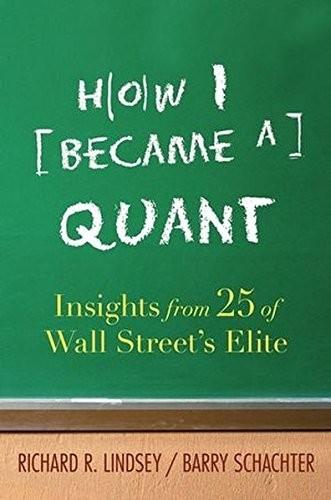
How I Became a Quant: Insights From 25 of Wall Street's Elite
by
Richard R. Lindsey
and
Barry Schachter
Published 30 Jun 2007
From a technical standpoint, short vol trades create ample opportunities for inexperienced quants to produce diametrically incorrect answers.11 Generally, performance data are conditioned on a manager not having experienced the key low-probability event; if they had then they would be out of business.12 Subsequently, the event that would have provided the texture necessary to elicit an appropriate estimate of volatility is almost, by definition, never available—an odd form of financial Heisenberg’s uncertainty.13 This is one example of just why quantitative financial research is so darn difficult; it involves rational (or at least thinking) participants who are not typically bound by the persistent laws of the physical world. Doubling Up The most colorful episode of doubling up behavior involved the notorious trader Nick Leeson, who was instrumental in bringing down the House of Baring.14 By all accounts, he reacted in a classic manner to the OPM (other people’s money) agency problem; he had masterfully engineered a career-ending loss of “X” and concluded that there was no additional cost in losing “2X” (since it was not his money) and there was a substantial cost associated with not recouping the loss before it was detected.
…
Discussed this issue with my dad and he related a personal incident involving a college acquaintance by the name of Shirley Heisenberg; this is, of course, a different form of uncertainty involving the inability to simultaneously observe the position and momentum of a particle. 14. For an excellent analysis of these events see the work of Professors Brown and Steenbeek in their paper titled “Doubling: Nick Leeson’s Trading Strategy.” 15. Working definition here is “guy from outta town” or “guy with shiny shoes;” you take your pick. 16. A lot of traders found themselves temporarily unemployed. The ones with more significant losses managed to get book deals. Incidentally, if you’re going to lose, lose big.
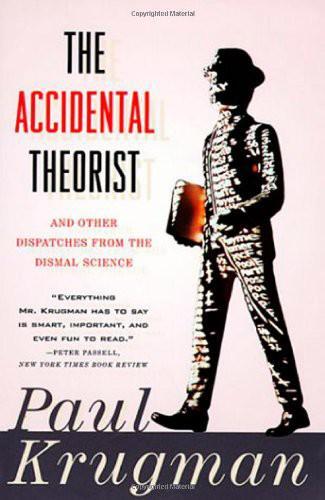
The Accidental Theorist: And Other Dispatches From the Dismal Science
by
Paul Krugman
Published 18 Feb 2010
But when an even bigger financial disaster was revealed a year later—the loss of more than $3 billion in the copper market by an employee of Sumitomo Corp.—the story quickly faded from the front pages. “Oh well, just another rogue trader,” was the general reaction. It eventually became clear, however, that Yasuo Hamanaka, unlike Nick Leeson of Barings, was not a poorly supervised employee using his company’s money to gamble on unpredictable markets. On the contrary, there is little question that he was, in fact, implementing a deliberate corporate strategy of “cornering” the world copper market—a strategy that worked, yielding huge profits, for a number of years.
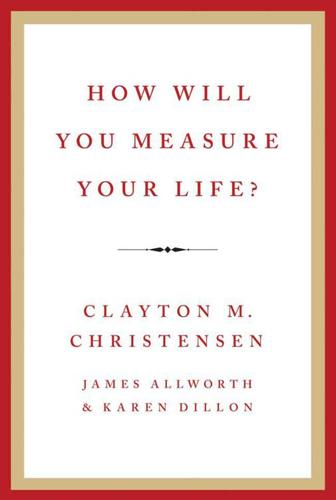
How Will You Measure Your Life?
by
Christensen, Clayton M.
,
Dillon, Karen
and
Allworth, James
Published 15 May 2012
All of those people surely began their careers with a true passion for what they were doing. No rising young athlete imagines that he or she will need to find ways to cheat to stay on top. Athletes believe they can work hard enough to earn their success. But then they are faced with that first opportunity to try something that might help them get an edge. Just this once … Nick Leeson, the twenty-six-year-old trader who famously brought down British merchant bank Barings in 1995 after racking up $1.3 billion in trading losses before being detected, suffered exactly this fate and talks eloquently about how marginal thinking led him down an inconceivable path. In hindsight, it all started with one small step: a relatively small error.
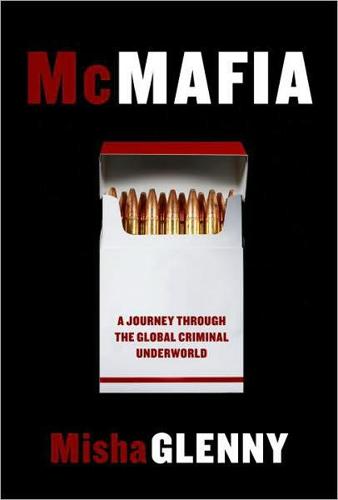
McMafia: A Journey Through the Global Criminal Underworld
by
Misha Glenny
Published 7 Apr 2008
By the mid-nineties, the foreign exchange markets alone reached a volume of trading that exceeded $1 trillion every day. This was more than forty times the value of daily global trade. In the world of licensed financial trading, malfeasance came to light only either when related losses destroyed an institution, as when Nick Leeson’s derivatives trading on the Japanese stock market brought down Barings Bank, or when outside regulators were tipped off about malpractice, as happened in the staggering case of the Bank of Credit and Commerce International (BCCI). Several scandals, from BCCI to Enron, have demonstrated that the world’s most famous private audit companies cannot be relied upon to alert governments to large-scale malpractice in the banking or corporate sectors.
…
There is no evidence to suggest that he was in league with the scammers—he was a genuine victim. But he was funding this wild gamble with somebody else’s money. Thousands if not millions of man-hours have gone into the Noroeste investigation, which stands as the third-biggest bank theft in history. (Nick Leeson’s destruction of Barings Bank and the looting of the Iraqi National Bank after the U.S. invasion of March 2003 take the top two places.) And yet not a single lawyer, judge, policeman, fraudster, or friend or spiritual adviser of Nelson Sakaguchi can answer the two central questions: Why did he do it?
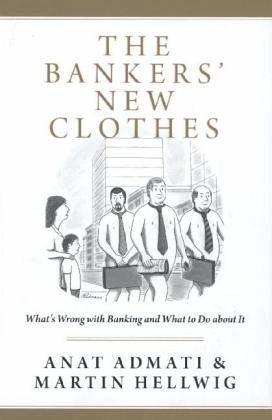
The Bankers' New Clothes: What's Wrong With Banking and What to Do About It
by
Anat Admati
and
Martin Hellwig
Published 15 Feb 2013
When rogue traders impose multi-billion-dollar losses on their employers, this is big news.36 By contrast, when banks suffer huge losses from systematic mistakes in lending decisions or from the maturity mismatch between their assets and their liabilities, the problem may not really make the news even if the bank’s difficulties create huge problems for others. In 1995, for example, Barings Bank in the United Kingdom was brought down by Nick Leeson, a trader in Singapore who had made a gigantic bet that Japanese stock prices would go up, a bet that created huge losses after the Kobe earthquake. Mr. Leeson became an instant media personality—and remained one until he was sent to jail. Yet the losses on his trades, roughly £1 billion, were only one-tenth of the losses from bad loans that brought down the French bank Crédit Lyonnais shortly afterward.
…
However, the new markets and new techniques have also expanded the scope for gambling, and they can be used in ways that increase rather than reduce risks in the system.38 Over the past twenty or thirty years, many scandals in which banks and their clients lost enormous amounts of money have involved derivatives. In Chapter 4 we mentioned the case of Singapore banker Nick Leeson, who brought down the United Kingdom’s Barings Bank in 1995 when he bet that Japanese stock prices would go up and instead they went down. By using derivatives rather than buying stocks, Mr. Leeson was able to build up extremely large positions in a very short time, with little control from the bank’s senior management.

Swimming With Sharks: My Journey into the World of the Bankers
by
Joris Luyendijk
Published 14 Sep 2015
Early in the life of the blog, the Swiss bank UBS was forced to acknowledge that one of its traders, Kweku Adoboli, had lost $2 billion. Contrary to the London Whale, Adoboli had broken lots of rules and laws, making him a so-called ‘rogue trader’. Every few years a scandal of this kind breaks out, the best-known examples being British trader Nick Leeson who in 1995 singlehandedly brought down the centuries-old British bank Barings, and French trader Jérôme Kerviel who in 2008 managed to lose €4.9 billion for Société Générale. In court, the prosecution portrayed Adoboli as a selfish man craving status and ever-bigger bonuses. This was the familiar trope of finance as a casino for greedy monsters.
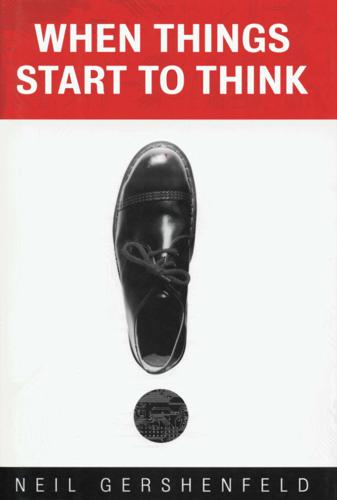
When Things Start to Think
by
Neil A. Gershenfeld
Published 15 Feb 1999
Smart Money Barings Bank was founded in 1762. In its long history it helped to finance the Louisiana Purchase (providing money Napoleon needed to keep fighting his wars), and counted the Queen among its loyal customers. In January of 1995 a twenty-eight-year-old trader for Barings in Singapore, Nick Leeson, lost most of what eventually proved to be $1.4 billion by trading futures in the Japanese Nikkei Index. That was twice the bank's available capital; by February the bank had folded, and in March it was sold to the Dutch bank lNG for £1. In July of that same year, Toshihide Iguchi, a trader for Daiwa Bank in New York, confessed to the bank that he had lost $1.1 billion trading apparently harmless U.S.
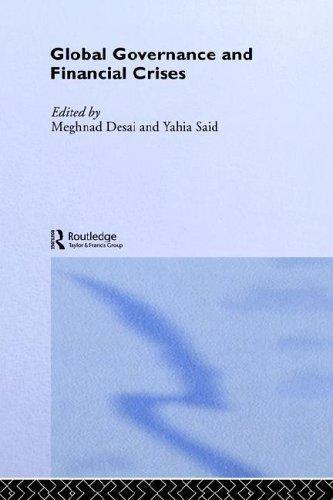
Global Governance and Financial Crises
by
Meghnad Desai
and
Yahia Said
Published 12 Nov 2003
Indeed, its intervention was the beginning of modern central banking by some accounts. And it seems to have succeeded. In the fifty years after 1866, there was only one crisis in Britain and this was the Baring crisis, which had more to do with Baring Brothers’ Argentine investments (shades of Nick Leeson a century later which scuppered the bank) than anything in London. Indeed, the Baring crisis of 1890 was very much a global crisis like the Asian crisis of 1997. It started with German investors withdrawing capital from Argentina. This led to the failure of an offering by Buenos Aires Drainage and Waterworks Company of £3.5 million in November 1888.
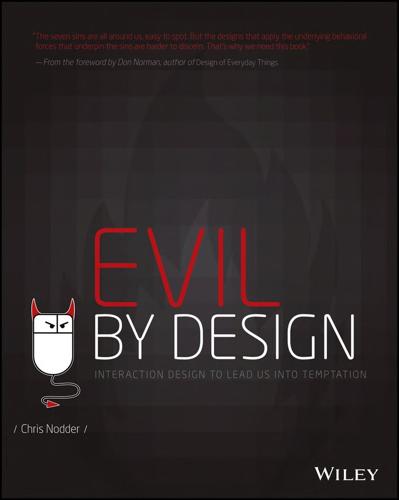
Evil by Design: Interaction Design to Lead Us Into Temptation
by
Chris Nodder
Published 4 Jun 2013
Dunning and Kruger caution that “poor performers do not learn from feedback suggesting a need to improve”—just the sort of people who’ll plow money into a financial vehicle they stand little chance of understanding. Derivatives trading without serious experience and industry knowledge is likely to lead to an illusion of control. Even with that experience you can still seriously lose your way. Just ask Nick Leeson, who single-handedly brought Barings Bank to bankruptcy in 1995 by losing $1.2 billion through trading equity derivatives. You can get some quick wins, and the low minimum investment makes it easy to gloss over early losses. The interfaces used by the web-based exchanges make the experience feel much like a game of chance with some added pseudo-skill built in.
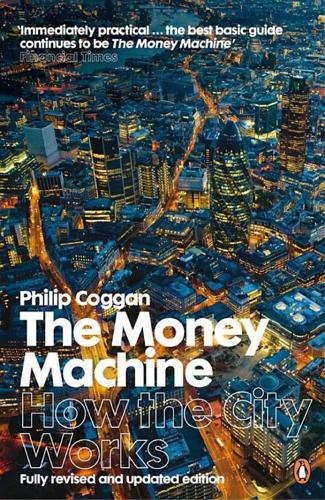
The Money Machine: How the City Works
by
Philip Coggan
Published 1 Jul 2009
But either these models were flawed or the risk managers were simply overwhelmed by the power of the traders, who could point to the short-term profits they were generating. Top traders can take home earnings (including their bonuses) that easily stretch into six figures and often top a million. If not properly monitored, however, their activities can endanger the health of the bank, as Barings found with Nick Leeson and the French bank Société Générale found with Jérôme Kerviel. Derivative instruments, such as futures and options, can be difficult to understand and can behave in unpredictable ways. It can be easier to disguise losses for long periods. Even when traders are not careless or fraudulent, they can just be wrong.

How to Speak Money: What the Money People Say--And What It Really Means
by
John Lanchester
Published 5 Oct 2014
As Warren Buffet once said, about financial-sector conduct during a previous boom, “It was the bankers who were wearing the ski masks.” Barings The oldest investment bank, or merchant bank as they used to be called, in England. In the long list of investment bank scandals and failures of the last few decades, Barings is the only bank to have been destroyed by the actions of a single individual. The man responsible was Nick Leeson, and the fateful moment came in January 1995. Leeson had been using tiny differences between the prices of stocks in Singapore, where he was based, and Tokyo. His trades were supposed to be a form of arbitrage, exploiting small differences in the price to make guaranteed profits, but Leeson had gradually, and unauthorizedly, begun to make bigger bets on the movement of the shares.

How to Be Champion: My Autobiography
by
Sarah Millican
Published 16 Apr 2018
There’s a kitchen rules one that is so passive-aggressive it practically says ‘Eat this or fuck off’, but in curly writing. Our massive cinema lightbox would regularly be spelt wrong, but it was such a fanny to go back up that we’d just leave it. Some classics included Sphere spelt Spear and the Nick Leeson story Rouge Trader. The bad spelling was everywhere. We’d leave work messages for each other on the white board behind the popcorn stand, where I worked. My favourite was: ‘Deepest appollogies. There’s a projeter falt in sceen 8.’ The first time I ever had a milkshake was at this cinema. There was a milk bar where the kids got hammered (on sugar) and threw balls at the heads of some unfortunate members of staff in Velcro hats.

Flash Crash: A Trading Savant, a Global Manhunt, and the Most Mysterious Market Crash in History
by
Liam Vaughan
Published 11 May 2020
One of Europe’s biggest banks had been brought to the brink by a lone trader with oversize ambitions and inadequate oversight. Later, Kerviel was sentenced to three years in jail and ordered to pay back the entire $7.2 billion he lost, the biggest fine ever levied on an individual. His desperate buying spree placed him among history’s most notorious rogue traders, a name uttered alongside the likes of Nick Leeson of Barings Bank and Kweku Adoboli at UBS. It also gave a young day trader from Hounslow the capital he needed to take his trading to new heights. CHAPTER 5 ◼ RISE OF THE ROBOTS The more money Nav made, the bigger the positions he took, as if he were climbing the levels of the ultimate computer game.
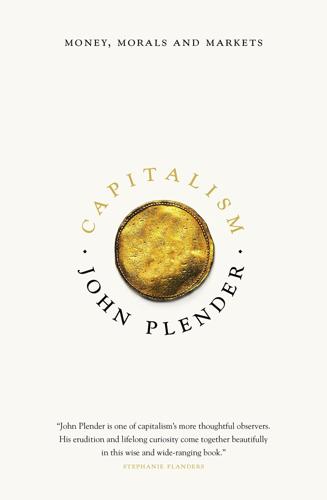
Capitalism: Money, Morals and Markets
by
John Plender
Published 27 Jul 2015
They do this by taking further big, risky bets, a practice sometimes referred to as gambling for redemption. In times gone by there was a modicum of honour among thieving traders. When Lazard Brothers, the London arm of the Lazard banking empire, was brought to its knees by a rogue trader in its Brussels office in 1931, the miscreant made a confession and shot himself. Nick Leeson, a trader who provided a fine example on the trading floor in Singapore of the delusional behaviour mentioned earlier by Edward Chancellor, brought down Barings, another great British investment bank. Yet he and other recent rogue traders such as Jérôme Kerviel at Société Générale appear to have no shame gene.

I Never Knew That About London
by
Christopher Winn
Published 3 Oct 2007
They made their reputation by helping to finance the Napoleonic Wars and the Louisiana Purchase, and eventually became so important to the City and the British Government that, in 1890, the Bank of England stepped in to bail them out when Edmund Baring, 1st Lord Revelstoke, lost millions during a reckless venture in Argentina. There was to be no second chance in 1995, however, when Nick Leeson, a young accounts clerk working out of Baring’s Singapore office, lost over £800 million after gambling on the Japanese futures market. Baring’s Bank collapsed and was sold to a Dutch bank for £1. THE WORLD’S OLDEST PSYCHIATRIC HOSPITAL, the BETHLEHEM ROYAL HOSPITAL, was founded just outside Bishopsgate in 1247 as the Priory of St Mary Bethlehem.
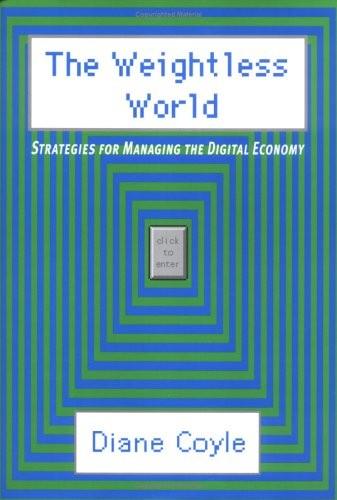
The Weightless World: Strategies for Managing the Digital Economy
by
Diane Coyle
Published 29 Oct 1998
International financial regulation The financial markets represent the ultimate weightless economic activity, located as they are in cyberspace. The popular view that the markets are the playground of lawless fiscal vigilantes is an exaggeration but there is a grain of truth in it. There have indeed been extraordinary scandals. Rogue derivatives trader Nick Leeson lost nearly £1 billion and brought down Barings Bank, one of the oldest and most blue-blooded in the City of London. Copper trader Yasuo Hamanaka did not topple Sumitomo in Japan, but caused it severe embarrassment as well as losses of billions of dollars. Proctor & Gamble lost $102 million after tax on two derivatives transactions arranged by Bankers Trust in 1994.

When the Money Runs Out: The End of Western Affluence
by
Stephen D. King
Published 17 Jun 2013
In addition to legal restrictions, there's an obvious reason for this: it's politically deeply unpopular. Far better, then, to let sleeping dogs lie even if, as with Illinois's credit rating, the dogs eventually wake up and administer a nasty bite. In the murky world of pension finance, the temptation is too often to sweep problems under the carpet. It is the Nick Leeson approach to dealing with bad financial news. The implications, however, are distressing. Unless pension benefits are cut – through, for example, a significantly higher retirement age, lower retiree income or bigger employee contributions – the costs will fall on others, most obviously taxpayers and recipients of public services.
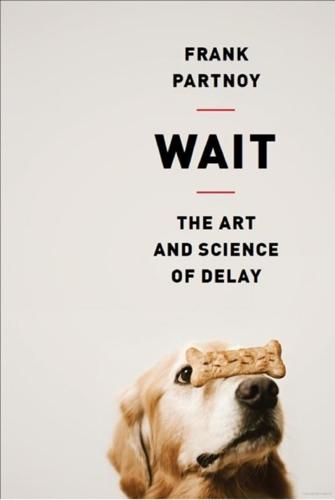
Wait: The Art and Science of Delay
by
Frank Partnoy
Published 15 Jan 2012
Most recently, the financial crisis was caused in part by overreliance on statistical models that didn’t take into account the chances of declines in housing prices. But that was just the most recent iteration: the collapse of Enron, the implosion of the hedge fund Long-Term Capital Management, the billions of dollars lost by rogue traders Kweku Adoboli, Jerome Kerviel, Nick Leeson, and others—all of these fiascos have, at their heart, a mistaken reliance on complex math. Nassim N. Taleb has written widely and wisely about the deception in financial models, most notably in his book The Black Swan: The Impact of the Highly Improbable (Random House, 2007). In retrospect, many economic models look absurd.
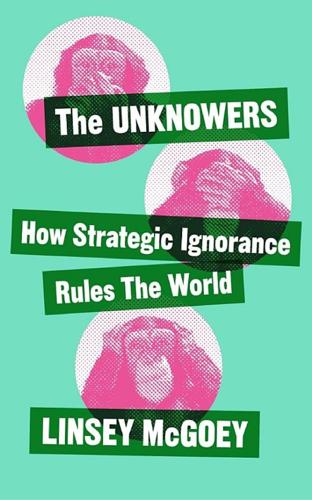
The Unknowers: How Strategic Ignorance Rules the World
by
Linsey McGoey
Published 14 Sep 2019
His superiors claimed he traded without their authorization, but as one law professor points out, ‘the bank failed to investigate even known breaches by Kerviel of market risk limits.’24 A similar pattern can be seen in the collapse of Barings investment bank in the UK in the 1980s, when 27-year-old derivatives trader Nick Leeson lost the bank £860 million. ‘In a sense,’ sociologists Bridget Hutter and Michael Power write, ‘the Barings Bank organization had all the information which might have alerted it to Leeson’s unauthorized trading.’ They decided not to act on this information.25 The usefulness of strategic ignorance in avoiding liability, especially for those at the top of corporate hierarchies, remains a little-understood problem.
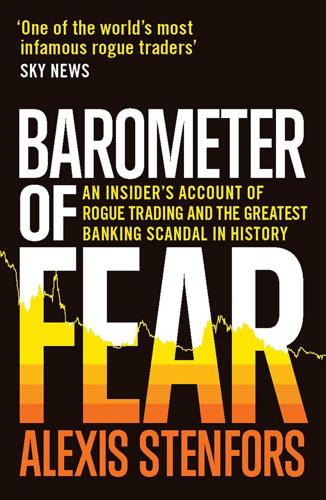
Barometer of Fear: An Insider's Account of Rogue Trading and the Greatest Banking Scandal in History
by
Alexis Stenfors
Published 14 May 2017
They had never even attempted to talk to me. It followed a familiar pattern. There were plenty of journalists writing about rogue traders and there were plenty of academics spending time in libraries researching rogue traders. Some clearly disliked the rotten apples in the financial industry, but others wrote more sympathetically about Nick Leeson, Kweku Adoboli, Jérôme Kerviel or the others who featured on the shortlist I was now very familiar with. Few, however, seemed to have met any of them, whether in person or electronically. Yet, new theories about how traders behave or why traders sometimes go rogue were continuously proposed based on knowledge in the public domain.
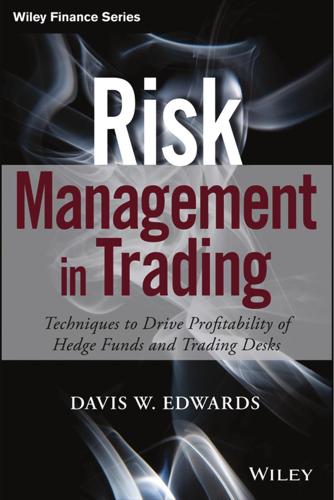
Risk Management in Trading
by
Davis Edwards
Published 10 Jul 2014
(See Equation 6.7, Volatility Calculation with Equal Probability.) σ= 1 N −1 2 ( xt − μ ) ∑ N t =0 where xt continuously compounded return at time t N number of samples t time, where t = 0 is the most recent sample μ mean return. This is calculated by the formula: μ= 1 N −1 ∑ xt N t =0 Case Study: Which Is the Best VAR to Use? The Collapse of Barings due largely to extremely large trades made by one of its traders, Nick Leeson. Trading out of the Singapore office, Mr. Leeson lost $1.3 billion on unauthorized investments on the Singapore International Money Exchange (SIMEX). These losses wiped out the firm’s entire equity capital and ultimately led to its collapse. At the time of the collapse, even under normal market conditions, this position would have had a 95 percent monthly VAR of approximately $835 million.
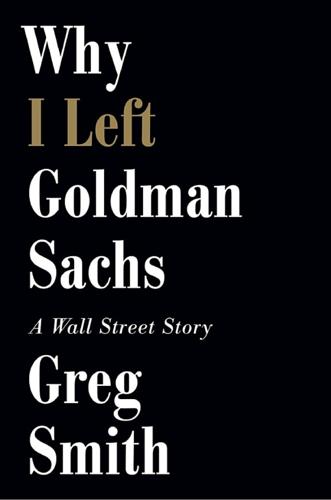
Why I Left Goldman Sachs: A Wall Street Story
by
Greg Smith
Published 21 Oct 2012
He was aware of his status, yet carried himself with an air of quiet confidence and humor, never arrogance. In the early 1990s, as a young derivatives trader in Tokyo, he had done something that has become an urban legend within Goldman Sachs: he made tons of money in the aftermath of the rogue derivatives trades by Nick Leeson that brought down Barings Bank. Remember: for every loser on a trade, there are ultimately winners as well. No one ever confirmed this to me, but Heller’s brilliance was said to have made the firm millions, and in gratitude and recognition of his skills, Goldman made him a partner at age twenty-eight, one of the youngest in the firm’s history.

Broke: How to Survive the Middle Class Crisis
by
David Boyle
Published 15 Jan 2014
He explained how he judged new recruits: ‘If he spends money on parties and racehorses, I say fine, because he will want more.’[30] It was a different world for the Barings managers charged with overseeing this new approach, so alien to the traditional middle classes. It was the world of derivatives and instantaneous electronic trading, and it was their Far East operations that were to bring about their downfall. When Barings Bank collapsed in 1995 because of the activities of one trader, Nick Leeson — who lost $827 million in Singapore betting on currency futures — it turned out that his London bosses had no idea what he was doing. They didn’t really understand the derivatives market that he was trading in, and had seen themselves as rather above finding out. The tragedy of the middle classes is that they still don’t know.
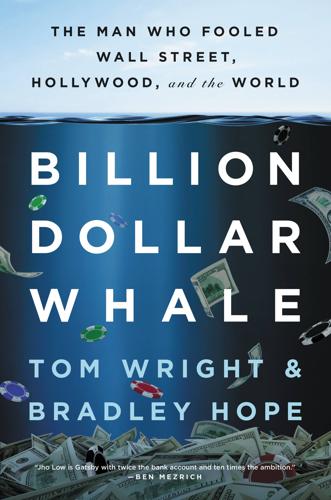
Billion Dollar Whale: The Man Who Fooled Wall Street, Hollywood, and the World
by
Tom Wright
and
Bradley Hope
Published 17 Sep 2018
For a financier like Leissner, there was an upside to all that volatility. Among foreign bankers, Asia had developed a reputation as a place to turbocharge a Wall Street career. Competition out in Hong Kong and Singapore was less fierce, and bankers were given more latitude to make big financial trades. In 1995 a rogue trader at Britain’s Barings Bank named Nick Leeson made unauthorized bets on Japanese stocks that led to the bank’s collapse. But as Leissner was arriving, activity in capital markets—the raising of money through selling stocks and bonds—was drying up thanks to the crisis. Lehman wasn’t too exposed, though, and it began to advise the region’s cash-strapped governments on a wave of privatizations to raise money.
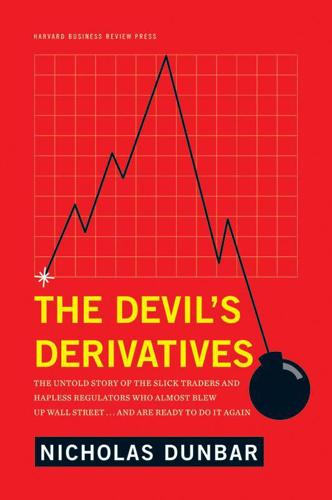
The Devil's Derivatives: The Untold Story of the Slick Traders and Hapless Regulators Who Almost Blew Up Wall Street . . . And Are Ready to Do It Again
by
Nicholas Dunbar
Published 11 Jul 2011
Appendix A timeline of some significant historical events referred to in the book, and episodes involving the book’s key characters. 1973 Fischer Black, Myron Scholes, and Robert Merton publish seminal papers on option pricing 1974 Robert Merton publishes paper using option theory to link debt and equity 1986 Start of S&L crisis 1987 Oldrich Vasicek publishes working paper applying Merton’s work to credit portfolios Federal Reserve protects Wall Street securities firms from October stock market crash by ensuring that banks lend 1988 Basel I bank capital accord agreed Nick Sossidis and Stephen Partridge-Hicks set up Alpha Finance for Citibank 1994 VAR models protect commercial banks from market turmoil 1995 Barings Bank almost bankrupted by Nick Leeson’s rogue trading Sossidis and Partridge-Hicks set up Sigma 1996 Basel Committee agrees to incorporate VAR-based trading book rules into bank capital accord Citibank launches Centauri SIV Moody’s binomial expansion technique CDO rating model published 1997 J.P. Morgan launches BISTRO synthetic CDO Emerging market debt crisis begins 1998 U.S.
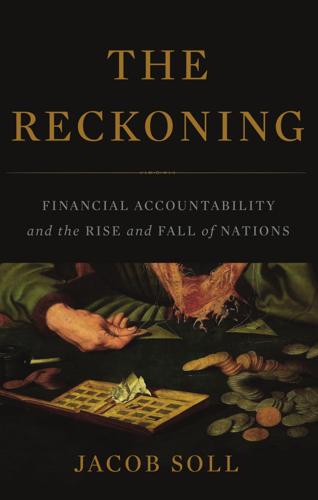
The Reckoning: Financial Accountability and the Rise and Fall of Nations
by
Jacob Soll
Published 28 Apr 2014
It became common for British businessmen and bankers to pose for portraits smiling and with their account books open on their desks. These portraits were a sign of confidence in modern techniques of accounting. The Baring Brothers—whose bank was founded in 1762 and folded only in 1995 because of the famed rogue trader Nick Leeson, who was also his branch’s auditor—were painted by Sir Thomas Lawrence poring over their main ledger like conquering explorers with their fingers on a map. A prominent businessman in India, John Mowbray, was depicted sitting cross-legged at his desk, with an air of satisfied confidence, his account books strewn around him as a local messenger brought him a report.
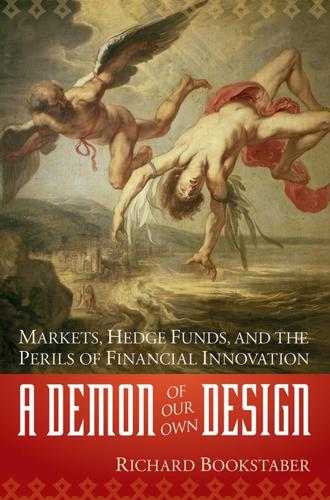
A Demon of Our Own Design: Markets, Hedge Funds, and the Perils of Financial Innovation
by
Richard Bookstaber
Published 5 Apr 2007
Bankers Trust was sued by four major clients—Procter & Gamble, Gibson Greetings, Federal Paper Board Company, and Air Products—big and ostensibly smart companies that asserted they had been misled by Bankers Trust concerning the risk and valuation of derivatives they had purchased. Far greater than the nearly $200 million in damages from the cases was the damage to Bankers Trust’s reputation. At least P&G could absorb the losses. Other firms were wiped off the map. Nick Leeson, working in the hinterland of Barings Bank’s Singapore office, traded unauthorized positions for several years, a simple matter because he was both the trader and the back office for its futures operation. In July 1992 a clerk at Barings mistakenly entered an order to purchase 20 Nikkei futures contracts as a sell.

The Ascent of Money: A Financial History of the World
by
Niall Ferguson
Published 13 Nov 2007
Investing in far-away countries could make you rich but, when things went wrong, it could be a fast track to financial ruin. As we saw in Chapter 2, the first Latin American debt crisis happened as long ago as the 1820s. It was another emerging market crisis, in Argentina, that all but bankrupted the house of Baring in 1890, just as it was a rogue futures trader in Singapore, Nick Leeson, who finally finished Barings off 105 years later. The Latin American debt crisis of the 1980s and the Asian crisis of the 1990s were scarcely unprecedented events. Financial history suggests that many of today’s emerging markets would be better called re-emerging markets.az These days, the ultimate re-emerging market is China.
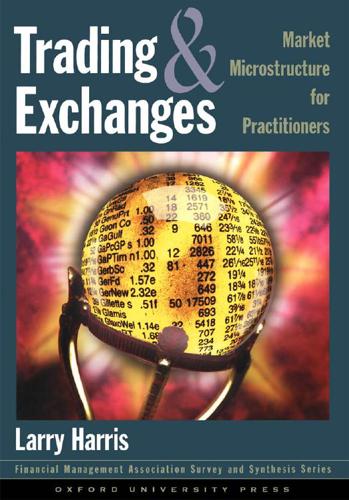
Trading and Exchanges: Market Microstructure for Practitioners
by
Larry Harris
Published 2 Jan 2003
The rogues try to hide these losses while they take large positions in an attempt to trade out of their problems. If the positions prove to be profitable, and their subterfuges go undetected, they keep their jobs and may even receive substantial bonuses. If the positions create substantial losses, they lose the jobs that they would have lost anyway. * * * ▶ Nick Leeson and the Fall of Barings Bank In 1994, Nick Leeson was head trader and head of settlements for Baring Futures Singapore, a branch of Barings Bank. His supervisors thought that he engaged in arbitrage trades that would profit from differences in the prices of Nikkei 225 futures contracts listed on the Osaka Securities Exchange (OSE) in Japan and on the Singapore Monetary Exchange (SIMEX).

The Spider Network: The Wild Story of a Math Genius, a Gang of Backstabbing Bankers, and One of the Greatest Scams in Financial History
by
David Enrich
Published 21 Mar 2017
He looked at each of them, asking what they did for the bank. “Prop trading,” came the proud response. The CEO looked queasy. After all, what business did a Scottish bank really have employing high-stakes gamblers on the opposite side of the globe? Years later, Hayes would recall that Goodwin appeared to be “a bit nervous that there was some Nick Leeson waiting in the wings in Tokyo.” Leeson was the Singapore-based trader whose unauthorized, money-losing gambles caused the 1995 collapse of Barings Bank, what had been the United Kingdom’s oldest investment house. But Goodwin wanted growth. That meant taking risks—by the company and by its legions of ambitious young traders.
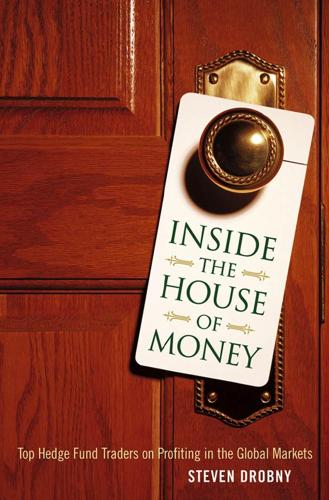
Inside the House of Money: Top Hedge Fund Traders on Profiting in a Global Market
by
Steven Drobny
Published 31 Mar 2006
Markets are going to go where they’re going to go.Yes, sure, on one or two days when I was liquidating, it pushed it down, but the moment I stopped selling, it went where it was going to go. 80 INSIDE THE HOUSE OF MONEY 250 Yen per Pound 225 200 Siva-Jothy Liquidating Sterling/Yen Position 175 150 No v9 Ja 3 n94 M ar -9 M 4 ay -9 Au 4 g9 Oc 4 t-9 De 4 c9 M 4 ar -9 M 5 ay -9 Ju 5 l-9 Oc 5 t-9 De 5 c9 Fe 5 b9 Ap 6 r-9 Ju 6 l-9 Se 6 p9 No 6 v96 Fe b9 Ap 7 r-9 Ju 7 n9 Se 7 p9 No 7 v97 Ja n9 M 8 ar -9 Ju 8 n9 Au 8 g98 125 FIGURE 5.2 Sterling/Yen, 1993–1998 Source: Bloomberg. Markets are immense but if people know there’s a big position out there that is being liquidated, they’ll go for it. Nick Leeson at Barings Singapore and Long Term Capital Management are the classic cases. The market sniffed their unwinding and traded against them. Did the sterling/yen experience prove useful later on? Yes, definitely. The 1998 LTCM/Russia episode for me was the reverse. The firm didn’t have a great 1998, but the prop group did and I attribute it to the lessons learned in 1994.
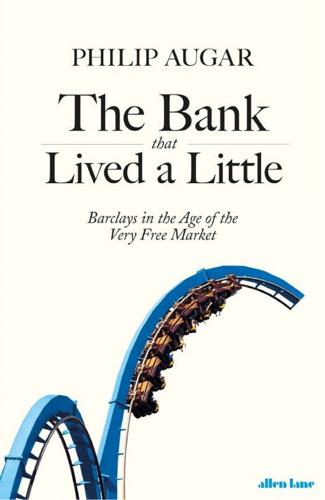
The Bank That Lived a Little: Barclays in the Age of the Very Free Market
by
Philip Augar
Published 4 Jul 2018
American banks were cross-subsidizing their entry into London from their hugely profitable home market, driving up staff costs and committing vast amounts of capital. The crunch came in 1995 when the investment banking strategies that the old merchant banks had dived into in 1986 unravelled spectacularly. In February, the venerable house of Barings was brought down by the fraudulent activities of a junior trader in Singapore, Nick Leeson. In May, Warburg, which had unwisely expanded its bond business in 1994 just as the markets crashed and then bungled an attempted merger with the American bank Morgan Stanley, sold itself to the Swiss Bank Corporation. In June, Kleinwort concluded that it was, after all, too small to compete and agreed to sell itself to the German bank Dresdner.

Masters of Management: How the Business Gurus and Their Ideas Have Changed the World—for Better and for Worse
by
Adrian Wooldridge
Published 29 Nov 2011
One newly minted boss ruefully complained that “it’s not as lonely at the top as I had hoped.” However, Sloan’s biggest worries would have been about command and control. Companies are finding that the shift from formal to informal management structures is rife with risks. The Baring family lost its bank because the management over-empowered one individual, Nick Leeson. Enron’s embrace of the post-Sloanist mantras of delayering and empowerment allowed it to cover up a financial Ponzi scheme. In theory, all these external sources of control are supposed to be replaced by “trust” and “self-discipline.” But the power of trust and self-discipline is constantly being undermined by all the other things modern management is up to.
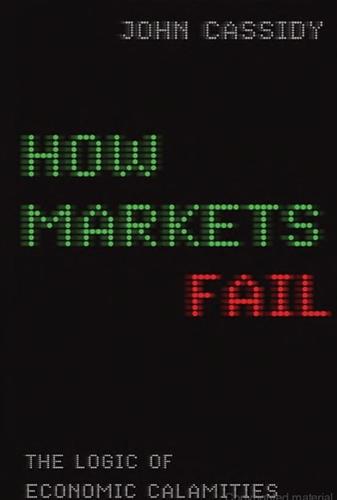
How Markets Fail: The Logic of Economic Calamities
by
John Cassidy
Published 10 Nov 2009
In 1994, Orange County was forced into bankruptcy after its treasurer, Bob Citron, took the county’s $7.6 billion investment pool, borrowed more money from Wall Street firms, and invested it in some derivative securities known as “inverse floaters.” A year later, the misplaced bets of a single derivatives trader, Nick Leeson, brought down the venerable Barings Bank. In 1998, the giant (and unregulated) hedge fund Long-Term Capital Management, which was a big player in many derivatives markets, had to be propped up and then wound down by a consortium of Wall Street banks, with the Fed playing a coordinating role. The demise of Long-Term Capital, which had two economics Nobel winners as partners—Robert Merton and Myron Scholes—demonstrated the limitations of counterparty regulation.
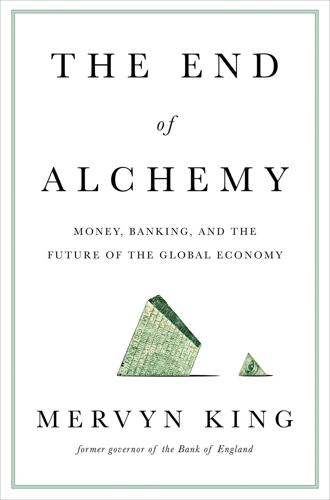
The End of Alchemy: Money, Banking and the Future of the Global Economy
by
Mervyn King
Published 3 Mar 2016
If at the end of that he still did not understand the product, the firm would not sell it.28 In 2008 there must have been many executives who wished they had followed Weatherstone’s heuristic. Just before Barings Bank, one of the oldest banks in the world, collapsed in 1995 under the weight of losses of $1.4 billion caused by a rogue derivatives trader, Nick Leeson, in its Singapore branch, the senior managers in London told the Bank of England that they were pleased with the trading results but slightly puzzled as to how its Singapore business had earned such a large profit. A useful heuristic for managers and regulators alike is to probe not only those parts of a business that are losing a lot of money but also those that are making a lot.
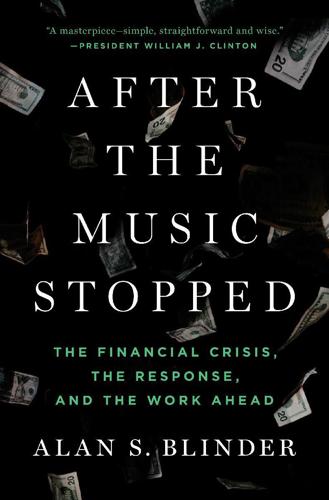
After the Music Stopped: The Financial Crisis, the Response, and the Work Ahead
by
Alan S. Blinder
Published 24 Jan 2013
One stemmed from a deal between Merrill Lynch and Orange County, California, which left the county with such large losses that it filed the largest municipal bankruptcy in U.S. history. Another involved a sale of derivatives by Bankers Trust to Proctor & Gamble, which led to a lawsuit by the latter and to the release of some crude and damning audiotapes. A third was the escapades of a single rogue trader, Nick Leeson, whose wild gambles in Singapore literally broke Barings, Britain’s oldest investment bank—and wound up as a movie. An inauspicious start, you might say. But that was nothing compared with what happened in the summer and fall of 1998, when losses at the now-infamous hedge fund Long-Term Capital Management (LTCM) helped set off a worldwide financial crisis—one that seemed monumental until it was dwarfed by the stunning events of 2007–2009.

Radical Uncertainty: Decision-Making for an Unknowable Future
by
Mervyn King
and
John Kay
Published 5 Mar 2020
Computers don’t do empathy, and we have learnt from studies of high-functioning autistics that people who lack insight into the feelings of others can do very well the sorts of things that computers, or Max Planck (who was not at all autistic), can do very well, but that they struggle with activities which are part of most people’s everyday lives and the working lives of almost everyone who is successful in organisations. 5 Shortly before Barings Bank went bust in 1995, chairman Peter Baring congratulated himself and his colleagues on the extraordinary profits that rogue trader Nick Leeson falsely claimed to be making in Singapore, asserting that ‘it is not actually terribly difficult to make money in the securities business’. 6 As a result of Leeson’s trades, the bank was actually haemorrhaging cash while reporting large profits. There is no more salutary example of the need to ask ‘What is going on here?’

Extreme Money: Masters of the Universe and the Cult of Risk
by
Satyajit Das
Published 14 Oct 2011
SG responded, but considered the queries “technical.” Daniel Bouton, SG’s chief executive, admitted that the bank’s derivatives business designed to run at 80 mph was actually doing 130. Evil Kerviel Whenever a bank loses a large sum trading, it is always blamed on a rogue trader. In 1995, Nick Leeson of Barings lost £860 million ($1.4 billion) in equity trading. In 1996 Yasuo Hamanaka of Japan’s Sumitomo lost $1.8 billion in copper trading. In 2006, Brian Hunter and hedge fund Amaranth lost $6 billion in natural gas trading. Recycled French homilies could not explain the largest derivative trading loss in history.

Adaptive Markets: Financial Evolution at the Speed of Thought
by
Andrew W. Lo
Published 3 Apr 2017
Before Kerviel, there was Kweku Adoboli (UBS, 2011, $2.3 billion loss), Boris Picano-Nacci (Caisse d’Epargne, 2008, €751 million loss), Chen Jiulin (China Aviation Oil, 2005, $550 million loss), John Rusnak (Allied Irish Banks, 2002, $691 million loss), Yasuo Hamanaka (Sumitomo, 1996, $2.6 billion loss), Nick Leeson (Barings, 1995, £827 million loss), and many others before them. Loss aversion applies not only to traders and investors, but to any individual facing a choice between a sure loss and a riskier alternative that may bring redemption. The same pressures even apply to those people charged with governing financial institutions.
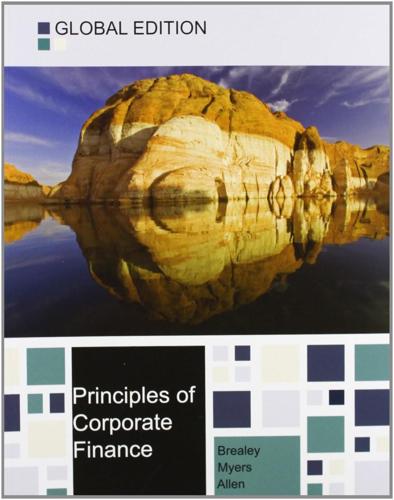
Principles of Corporate Finance
by
Richard A. Brealey
,
Stewart C. Myers
and
Franklin Allen
Published 15 Feb 2014
Corporate Governance and Managerial Preferences,” Journal of Political Economy 111 (2003), pp. 1043–1075. When corporations are better protected from takeovers, wages increase, fewer new plants are built, and fewer old plants are shut down. Productivity and profitability also decline. 5Baring Brothers, a British bank with a 200-year history, was wiped out when its trader Nick Leeson lost $1.4 billion trading in Japanese stock market indexes from a Barings office in Singapore. Leeson was gambling for redemption. As his losses mounted, he kept doubling and redoubling his trading bets in an attempt to recover his losses. 6“One firm cannot unilaterally withdraw from the business and maintain its ability to conduct business in the future,” he said later.
…
The nearby Finance in Practice box describes how the French bank Société Générale took a $7.2 billion bath from unauthorized trading by one of its staff. The bank has plenty of company. In 2011 the Swiss bank UBS reported that a rogue trader had notched up losses of $2.3 billion. And in 1995 Baring Brothers, a blue-chip British merchant bank with a 200-year history, became insolvent. The reason: Nick Leeson, a trader in Baring’s Singapore office, had placed very large bets on the Japanese stock market index that resulted in losses of $1.4 billion. BEYOND THE PAGE ● ● ● ● ● Metallgesellschaft brealey.mhhe.com/c26 These tales of woe have some cautionary messages for all corporations. During the 1970s and 1980s many firms turned their treasury operations into profit centers and proudly announced their profits from trading in financial instruments.
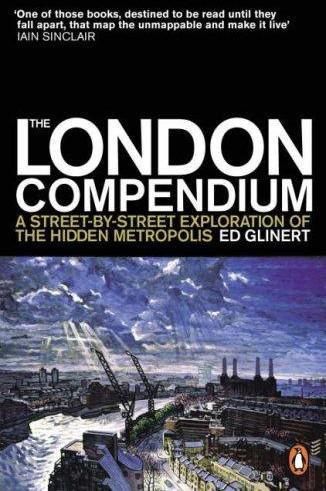
The London Compendium
by
Ed Glinert
Published 30 Jun 2004
Barings had insufficient funds to pay the huge debt, but City powerbrokers reasoned that if the bank collapsed it would drag down with it too many firms and confidence in the Square Mile would be shattered. So in November 1890 a consortium led by the Governor of the Bank of England bailed it out, resulting in the bank’s being reconstituted as Baring Brothers & Co. Ltd and Revelstoke ruined. Around 100 years later a trader, Nick Leeson, working out of Barings’ Singapore office, lost $1.3 billion after a gamble that the Japanese stock exchange would rise went awry. Leeson blamed management in London for the débâcle, they in turn blamed him, but he was arrested and held for nine months in a Frankfurt prison before being extradited to Singapore where he was given a six-and-a-half-year sentence.